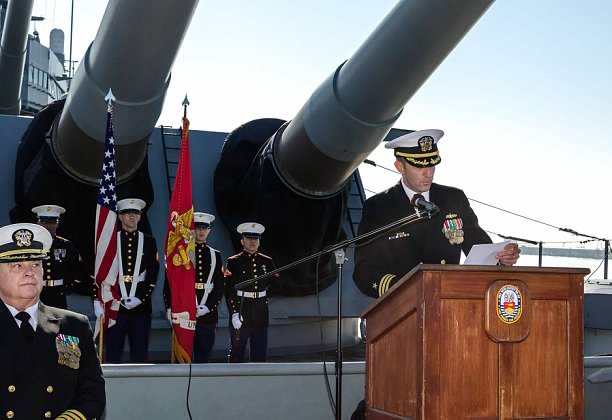
The Navy’s most decorated battleship, the USS New Jersey, honored members of the Sixth Naval Beach Battalion and all military veterans who served our great nation over the years – Veterans Day 2012.
Good afternoon and thank you CAPT Urban for the introduction and for being my tour guide in this wonderful city. Before I begin the presentations, I must first say thank you to the Staff and Crew of the NEW JERSEY for hosting this presentation today – and on very short notice. Special thanks to Mr. John Hall for coordinating the event and putting together the great ceremony we will enjoy today. The ship looks great – well done!
Today as the Nation pauses to celebrate the sacrifices made by Veterans of the United States of America, I have the honor and privilege to present an award and a badge that were both a long time in coming. Over 68 years ago, thousands of American Sailors, Soldiers, and Airmen stormed Hitler’s Fortress Europa through Normandy, France, shattered the Nazi fortifications and established a beach head, for freedom to stream ashore. American amphibious forces landed in the grey morning hours under intense shelling and machine gun fire -- taking horrendous casualties, none more so than those forces on Easy Red, Omaha Beach.
Leading the assault on Omaha Beach were members of the 6th Naval Beach Battalion, the American Beachmasters, tasked with organizing chaos and ensuring combat power flowed smoothly ashore. Included in the Battalion ranks were doctors and corpsmen charged with triaging, treating, and medically evacuating the wounded from the beach. It was noted that first-aid men of all units were the most active members huddled against the seawall. With limited facilities available to them, they did not hesitate to treat the most severe casualties. Gaping head and belly wounds were bandaged with the same rapid efficiency that dealt with the more minor wounds. These men operated under devastating fire, unhesitatingly. In the end, the mortality rate of the wounded that reached England was 3/10 of 1 percent. More than 99 percent of the injured troops evacuated, survived.
The stories and sacrifices of these men of the 6th and other Naval Beach Battalions went largely unacknowledged for years because of security reasons during the war, and post-war they were simply filed away.
Earlier this year we were approached by Mr. Ken Davey, the son of Lieutenant J. Russell Davey, Medical Corps who led one of the Medical Sections during the landings. Mr. Davey had found out about the US Army Combat Medical Badge presented to medics who had tended to troops under combat conditions. He asked us to look into the eligibility of the corpsmen of the Battalion as they were organizationally attached to the 5th Special Engineer Brigade of the First Infantry Division. As it turns out, not only were they eligible for the Combat Medical Badge, they were also eligible to receive the Bronze Star. Today, I am proud and honored to be able to recognize 14 of 84 members of the Medical Section of the 6th Naval Beach Battalion and present them with the Combat Medical Badge and the Bronze Star.

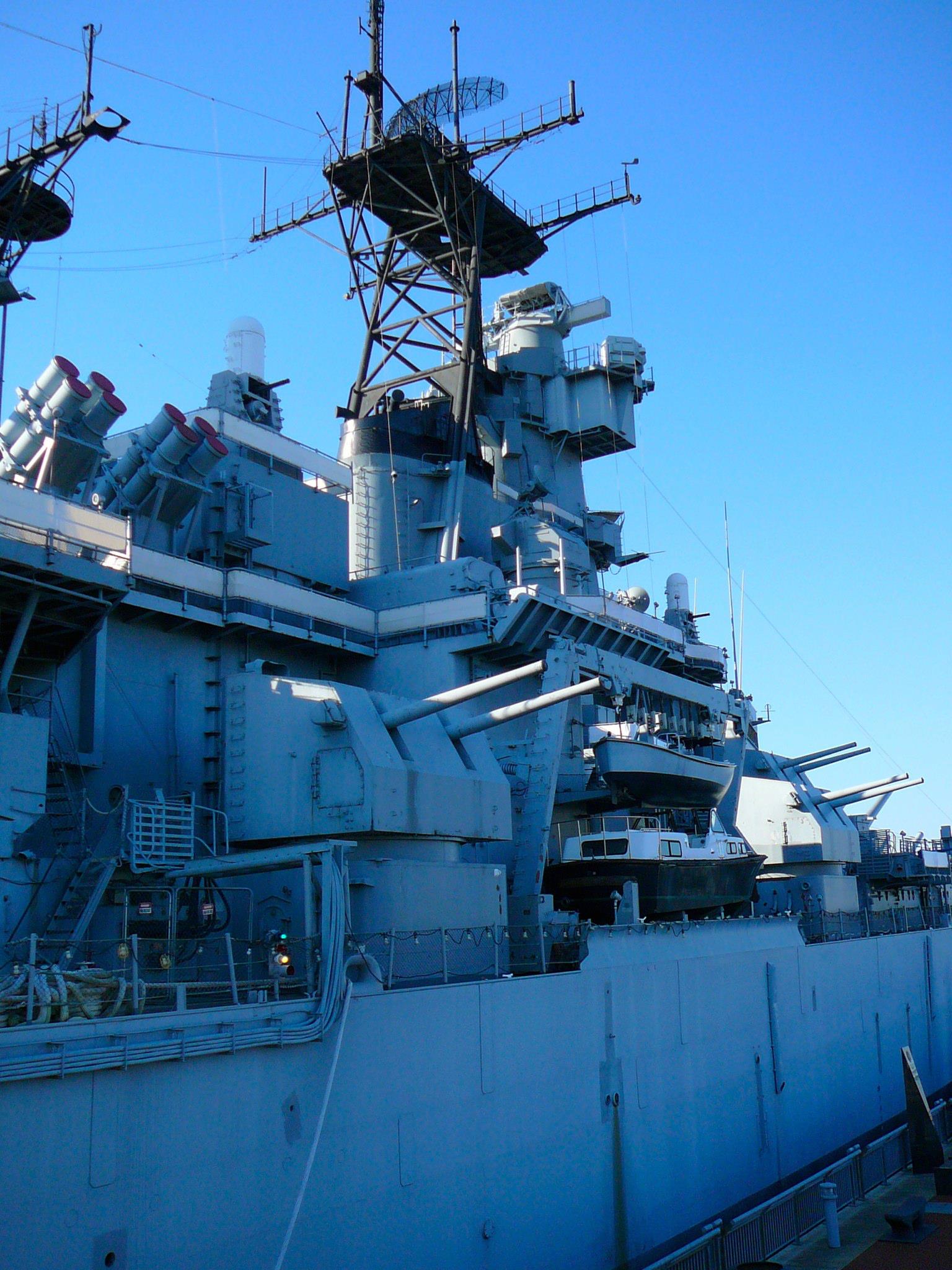
THE BRONZE STAR MEDAL is awarded to Pharmacist's Mate Third Class Andrew R. Chmiel for meritorious achievement while serving as a Medical Corpsman with the 6th Naval Beach Battalion on 6 June 1944, on Omaha Beach. While his unit was attached to the 16th Infantry, 1st Infantry Division during Operation OVERLORD, Corpsman Chmiel performed his duties to save his comrades in an especially heroic manner. He collected casualties to landing craft. During this time, groups of casualties on the beach were subjected to heavy concentrations of mortar fire, and craft were under artillery fire constantly. Corpsman Chmiel’s actions during the invasion of Fortress Europa greatly contributed to the Allied War effort and the mission of restoring freedom to the people of Europe. Corpsman Chmiel’s actions reflect great credit upon himself, his unit and the Armed Forces of the United States.
Gentlemen, we as a Service, and we as a Nation, thank and applaud you for your service and your sacrifice. We thank you and your shipmates for the freedoms you secured; it is an honor to be here to present these awards.
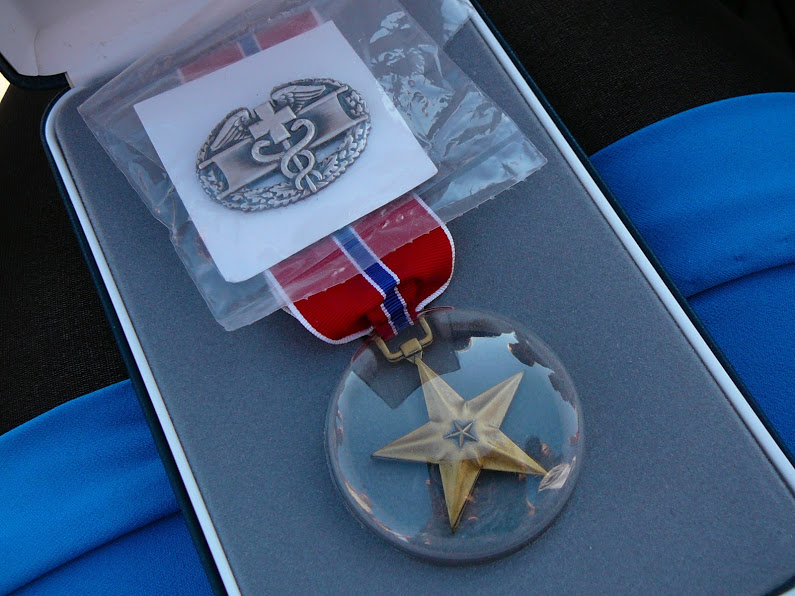



On Veterans Day onboard the Battleship NEW JERSEY, 89-year-old Andrew Chmiel is awarded the Army Bronze Star and Combat Medical Badge by Commander Christopher Nelson, USN, CO Beachmaster Unit One, Coronado, CA. BMU 1 officers and personnel are descendents of the World War II beach battalions.
Corpsman Chmiel was a member of the initial medical detachment to go ashore Omaha Beach on D-Day 6 June 1944. At H+65 minutes or 0735, one hour after the first man stepped onto the invasion beach, Chmiel’s 6th Beach Battalion C-8 platoon went down the port ramp of LCI(L) 88 heading for the Easy Red sector of Omaha Beach. In chest-deep Channel water, Beachmaster Joe Vaghi was out in front followed by Comdr. Gene Carusi, Ensign Reich, Cox Ed Marriott, Amin Isbir (KIA), Lewis “little boats” Strickland, John Hanley, Eddie Gorski, Frank Hurley, Bob Walley, Harold Roderick, Ray Castor, John Shrode, Andy Chmiel, John Dietzman, George Abood, David Catallo, Bob Millican, Norman Paul, Emil Candelaria, Al Silva, Howard Hampton, “little Dr. Davey” and the remainder of C-8 platoon. As naval elements attached to the Army's 5th Engineer Special Brigade, the mission of these World War II sailors was to prepare the beachhead, provide medical aid for the early wounded and keep men and materials moving across the beach.
On that historic D-Day morning, 6th Beach Battalion sailors went ashore an apparent military disaster. Among a number of unfortunate events, most of the H-hour assault tanks scheduled to lead the charge onto Omaha were at the bottom of the Channel or burning on the beach. The resulting casualty rate of the H+1 minute invasion troops and the Army-Navy gap assault teams was appalling. Beachmaster Vaghi took out his .45 caliper pistol and successfully motivated assault troops to move away from the beach obstacles about to blow up! The Overlord nightmare of wounded U.S. servicemen piling up on the beach already had become a reality. While beach battalion personnel joined the assault, the medical teams, including injured doctors and corpsmen, set up aid stations and immediately began performing their humanitarian duties. So many soldiers and sailors were wounded in the tidal flat that it was difficult for the corpsmen to distinguish the living from the dead. (‘Sailors Dressed Like Soldiers’ Naval History 1999)
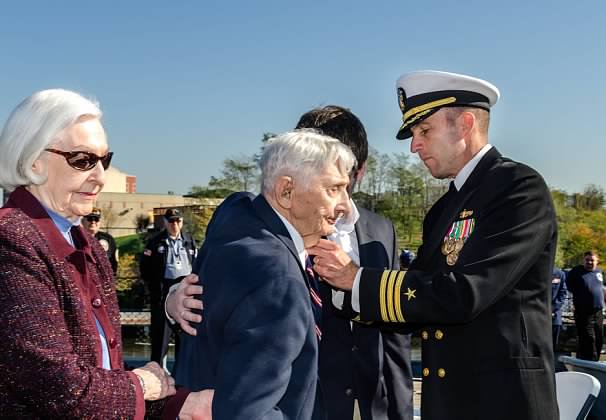
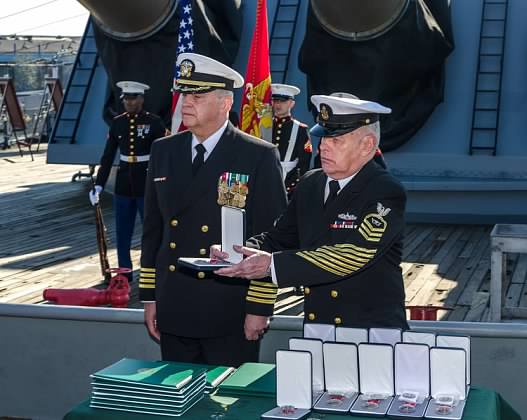
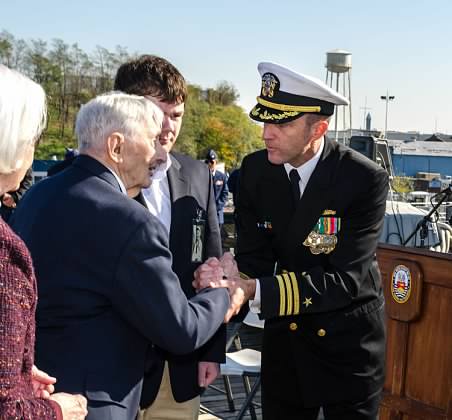
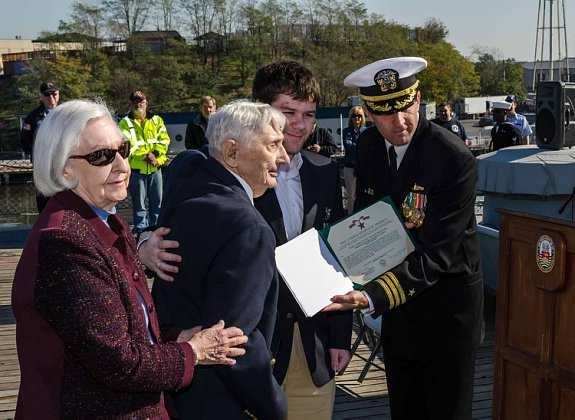
THE BRONZE STAR MEDAL is awarded to Pharmacist's Mate Third Class Vincent A. Kordack for meritorious achievement while serving as a Medical Corpsman with the 6th Naval Beach Battalion on 6 June 1944, on Omaha Beach. With his wife Verna and grandson at his side, 89-year-old Vincent Kordack is awarded the Army Bronze Star and Combat Medical Badge by Commander Christopher Nelson, USN, CO Beachmaster Unit One, Coronado, CA
Corpsman Vince Kordack’s 6th Naval Beach Battalion was commissioned at Fort Pierce, Florida, on 9 October 1943, with Lieutenant Commander Eugene C. Carusi as Commanding Officer. Shortly thereafter, the battalion was ordered back to Camp Bradford, Virginia for further amphibious training. The organization remained at Bradford for about two months, during which time, joint maneuvers were held with the Army at Solomons, Maryland and additional necessary equipment was issued. The battalion was originally formed in July 1943 and trained exclusively for OVERLORD, the Allied permanent re-entry into Continental Europe.
With a total strength of 42 officers and 362 enlisted men, Battalion elements were attached for the 6 June 1944 cross-Channel attack as follows:
-
Company A - 336th Engineer Combat Battalion
- Company B - 348th Engineer Combat Battalion
- Company C - 37th Engineer Combat Battalion
- Battalion Headquarters - to land with 37th Engineer Combat Battalion
Working with Army engineers, the Naval Beach Battalions formed a link between land and sea forces. The beach battalions operated aid stations on the beach, directed the Normandy landings and the shore-to-ship phase of the seaward evacuation of casualties.
Shortly before D-Day, Brigadier General Frank A. Keating, who had overall responsibility for Army amphibious training, emphasized, “Amphibious operations are dramas of life and death and the members of the cast are our soldiers and sailors. Their backstage life cannot be fully revealed at this time, but suffice it to say it is hard and exacting and requires courage of the highest order. The rehearsals - preliminary training - are shrouded in secrecy. It must be that way, and not until the very minute of attack against the enemy-held beach do many, beyond the members of the task force, know anything about the operation. Unlike any other form of warfare, an amphibious operation cannot strike, fail, retreat, and try again. It must succeed the first time. This requires teamwork and coalescing of the Army and Navy components into a hard-hitting and fast-moving force. That teamwork exists. This war has brought the Army and Navy closer together than ever before in our history, and Amphibious Forces are the epitome of everything that is sought in military efficiency.”
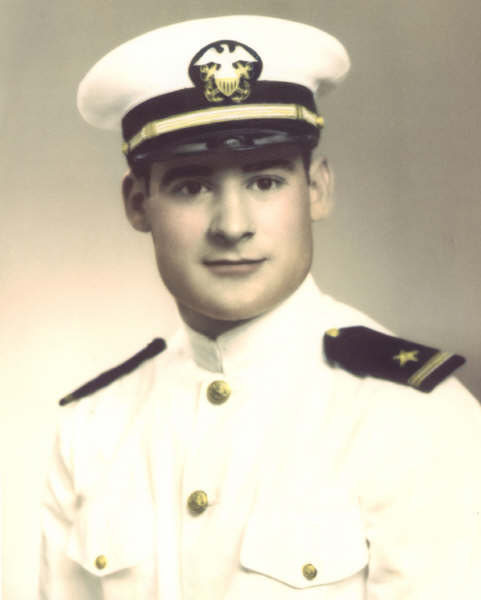
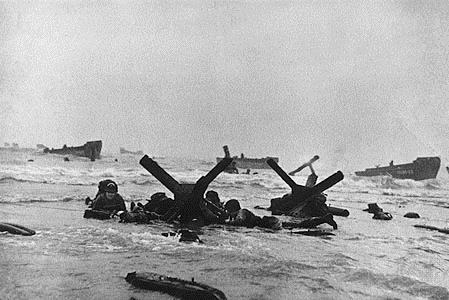
U.S. Navy Beachmaster Joseph P. Vaghi, Jr., 1943, and a year later, during the early morning of D-Day, the view from Vaghi’s C-8 platoon on the beach; Robert Capa’s photo of U.S. Army 5th Engineer Special Brigade troops taking cover behind “hedgehog” beach obstacles in the Easy Red sector of Omaha Beach.
On 6 June 1994, half a century after the Allied invasion of Normandy, a U.S. Army D-Day veteran remarked that the most horrendous invasion sight was a beach battalion bulldozer moving bodies to make roads off the Easy Red sector of Omaha Beach. "A most heroic sight was that of a Navy Beachmaster calmly walking along the beach issuing orders through a bullhorn." Several hours earlier, Beachmaster Joe Vaghi had used that powered megaphone to pass along the final attack order, exhorting the 1st Division assault troops to capture the beach exits above Easy Red.
Operation Overlord's evacuation problem was to shield the demoralizing sight of heavy casualties from the battle troops scheduled to go ashore later in the morning on D-Day. In order to achieve both humanitarian and military objectives, OVERLORD medical planners sent nine Navy doctors and seventy-two 6th Beach Battalion corpsmen ashore during the initial assault phase of the Normandy landings. The Navy Beachmaster, in coordination with his medical officer, provided seaward evacuation of the casualties. “Casualty handling constitutes a morale factor of great concern to the combatant branches” wrote Captain George B. Dowling, MC, USN, Western Naval Task Force surgeon. “Firepower must be maintained regardless of the wounded.” During the D-Day assault, “Anything that detracts the attention of the combat troop decreases his value as a fighter. Thus, to lessen the shrieking and groaning of the wounded, to rapidly clear areas of personnel casualties and to maintain an efficient casualty handling service is of military value.”
Once ashore, the 6th Naval Beach Battalion became the vital link between land and sea forces in the St. Laurent-Colleville area of Normandy. The 400-man Navy battalion, composed of three companies, including three platoons within each company, organized the Omaha landings in the invasion sectors code-named Easy Red, Fox Green and Fox Red. The commander of each platoon was a Beachmaster, whose duties have often been described as similar to a traffic cop at a busy intersection in hell. Utilizing hydrographic sailors for beach reconnaissance and demolition, a communications section, boat repair specialists, a medical doctor, and Navy hospital corpsmen of the platoon, the Beachmaster controlled all boat traffic coming onto the beach and arranged for the shore-to-ship evacuation of the casualties. (Navy Medicine, Vol. 91, Nov., 2000)
On Normandy D-Day, “Ensign Vaghi who was the beachmaster on a beach [Easy Red] was advised by a captain of the United States Army that a certain jeep on the beach had just been set afire by artillery fire and that the jeep contained gasoline and hand grenades. Ensign Vaghi assisted by [Pharmacist’s Mate Third Class Robert] MILLICAN, immediately ran to the jeep, and dragged away a wounded man who had caught afire from the burning jeep and hauled off two five gallon cans of gasoline thus averting an explosion. This act involving utter disregard of personal safety unquestionally resulted in saving the lives of a number of wounded men who were immediately adjacent to the jeep. The courage and devotion to duty under heavy enemy fire displayed by Ensign Vaghi were in keeping with the best traditions of the United States naval service.”
Navy Beachmaster Joe Vaghi, awarded the Bronze Star in 1944 for meritorious duty on Omaha Beach, wrote of D-Day: “Perhaps the most touching moment that day was when a young soldier lay dying on the beach. I bent over him and told him to hang in there and that I would send help. Dr. Jim Davey, Lt.(jg) M.C. of my platoon administered morphine which relieved him of the pain, and shortly after, he was dead. I shall always regret that I did not get his name. He was so young and so dependent on us to help him.”
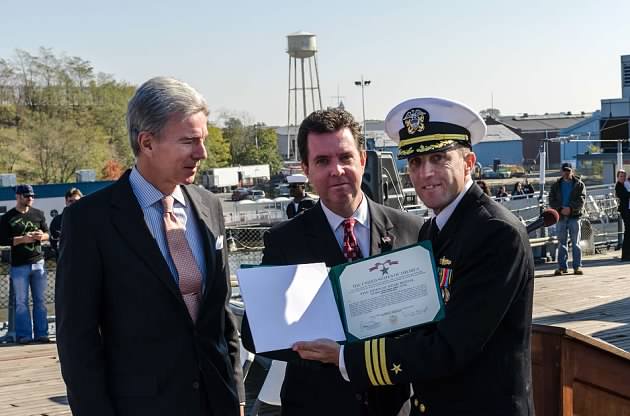
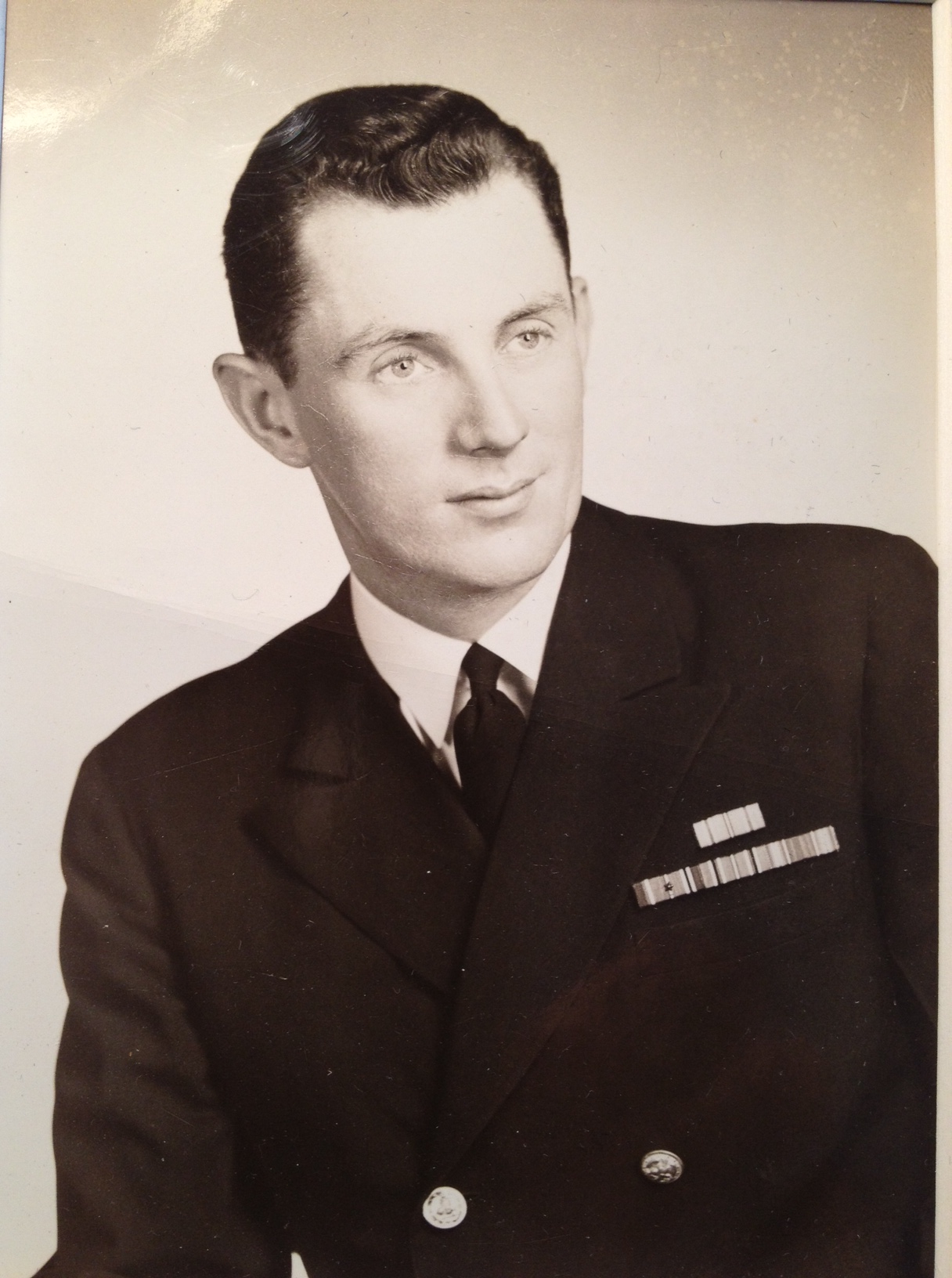
THE BRONZE STAR MEDAL is posthumously awarded to Lieutenant James F. Collier, MC, USNR, for meritorious achievement while serving as a Medical Officer with the 6th Naval Beach Battalion on 6 June 1944, on Omaha Beach. Phil and Jeff Collier accept the awards on behalf of their father.
Tragically, not all Navy Beachmasters and their men made it ashore Omaha Beach on D-Day. On that fateful morning, USCG-manned LCI(L) 85 carrying 6th Beach Battalion troops landed with utter disaster. At 0830, the large landing craft had been hit about 25 times killing Beachmaster Jack Hagerty, Beachmaster G. E. Wade, Assistant Beachmaster Len Lewis, Senior Petty Officer George L. Abbott, Senior Hospital Corpsman John T. O’Donnell, Pharmacist's Mate Second Class John F. Peterssen, Radioman T. I. Simmons, and Radioman Alton Hudson. Dr. John F. Kincaid and his corpsmen went to work doing what they could for the wounded. "The deck was so slick with blood and cluttered with bits of flesh and dead and mutilated men that it was difficult to move from one part of the ship to another,” said Lieutenant Coit Hendley, commanding officer of LCI(L) 85. “There is no need to describe all the pitiful cases. No one will ever forget! We had 15 dead and 30 wounded. Only four of the ship's crew were wounded. The other casualties were all from the beach battalion."
After losing four fellow officers during the Normandy landings, Dr. James Collier, a 1942 graduate of Temple Medical School, performed his humanitarian duties in the Fox Green sector of Omaha Beach. His mission was to provide triage and medical treatment for the assault troops of the 1st Infantry Division, and arrange for casualty evacuation. Working beside Army counterparts, young Dr. Collier and his corpsmen remained extremely busy while the surgical teams on the hospital tank landing ships (LSTs) prepared to receive heavy casualties. Not until 1130 on D-Day did battle conditions improve so that the beach battalions were able to begin evacuating the wounded and dying.
The principal task of the Navy Medical Department in France was that of shore-to-shore evacuation. The amphibious beach battalions represented the “far-shore link” in the medical evacuation chain. The “far-shore” phase included medical aid, exchange of supplies and shore-to-ship evacuation of the casualties. Although there were many unavoidable delays, especially during the early hours of D-Day, the securing of craft for seaward evacuation was the responsibility of the beach battalion medical officer through the Navy Beachmaster. Once aboard the hospital LSTs, surgery and expert medical treatment was administered during the 100-mile-Channel-crossing, the “middle link” in the Navy evacuation chain. The Army “near-shore” casualty reception link in Great Britain was augmented by 35,000 beds and hospital equipment shipped from the U.S.A., the equivalent of shipping about 12 complete New York City Bellevue Hospitals, except the buildings. Of all the U.S. servicemen wounded on the “bloody” beaches of France, more than 99% evacuated back to England by the U.S. Navy survived the invasion.

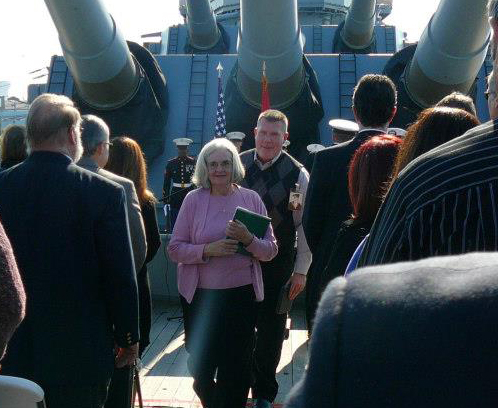
THE BRONZE STAR MEDAL is posthumously awarded to Pharmacist's Mate Third Class Charles L. Abel for meritorious achievement while serving as a Medical Corpsman with the 6th Naval Beach Battalion on 6 June 1944, on Omaha Beach. The ceremony onboard the Battleship NEW JERSEY was particularly moving when Martha Goldtharp and Erik Abel accepted the awards on behalf of their uncle, Charles Larabee Abel.
SIXTH Beach Battalion medical teams, forced to drag casualties from the surf toward the enemy's murderous guns on D-Day, became casualties themselves. Under punishing fire, aidmen worked up and down the beach and in the minefields, bandaging, splinting, giving morphine, and plasma. Navy doctors and corpsmen, often themselves injured, worked as they could to give emergency treatment. The casualty rate of the Battalion's medical personnel on Normandy D-Day was 27 percent. Five corpsmen died performing their humanitarian duty:
PhM 3c Charles L. Abel (KIA)
HA1c Virgil Mounts (KIA)
PhM 1c John T. O'Donnell (KIA)
PhM 2c John F. Peterssen (KIA)
PhM 3c Morris W. Rickenbach (KIA)
“We lost many men to bullets but also we had many drown. The drowning of our soldiers was not publicized that much but we lost many to the icy water,” said Dr. Lee Parker of A Company. “Many of the wounded soldiers were in shock and it wasn't always easy to tell the living from the dead among the hundreds of bodies that lay on the beach or washed in the surf.”
Less than a year after surviving "bloody” Omaha Beach, Dr. John F. Kincaid was killed during a kamikaze attack off Okinawa. Pharmacist's Mate Third Class Bryon A. Dary, who won a Silver Star in France, was killed on Iwo Jima in the Volcano Islands, February 1945, and posthumously awarded the Navy Cross.
Veterans of the 6th Naval Beach Battalion returned from World War II in silence and to this day, do not consider themselves heroes. "The men who didn't come home are the real American heroes," said the late Dr. Lee Parker, who lost his older brother during the war. "It's bad to see a 17-year-old come up with the loss of a leg, the loss of an arm, certainly the loss of life. War is hell. It's not to be glorified in any way."
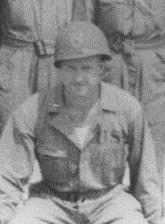
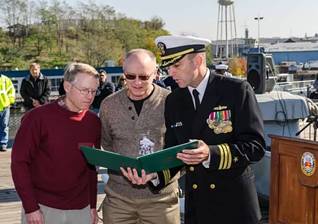
THE BRONZE STAR MEDAL is awarded to Lieutenant Frank M. Ramsey, MC, USNR, for meritorious achievement while serving as a Medical Officer with the 6th Naval Beach Battalion on 6 June 1944, on Omaha Beach. Tim and Wally Ramsey accept the Army Bronze Star and Combat Medical Badge on behlaf of their 97-year-old father.
Dr. Frank Ramsey, a 1942 medical school graduate from the University of Pennsylvania, was a young Navy medical officer in the 6th Beach Battalion on D-Day. Once Dr. Ramsey approached a group of wounded on the invasion beach, he had to make an instant decision - who was beyond help, who could help themselves, and who would benefit most from medical intervention. Paradoxically, amphibious warfare instructions for medical personnel warned that "It is essential on landing to seek immediate cover. Only two people are seen on a modern battlefield - one who is a casualty and one who is just about to become a casualty."
On the Fox Red sector of Omaha Beach, Lieutenant Ramsey, platoon A-1, was seriously wounded when flying fragments of metal tore into his back after a nearby burning half-track exploded. Dr. Ramsey said it felt like he was “kicked by a mule in the back!" The soldier being treated by Ramsey was killed outright. Pharmacist's Mate Third Class Byron Dary went immediately to the aid of his medical officer, administered first aid on the spot, and dragged Ramsey to a nearby fox hole for safety. Refusing evacuation while on morphine, Dr. Ramsey continued to provide triage instructions to his USN corpsmen.
Fellow officer, Dr. Lee Parker, a 1942 medical school graduate at the University of Georgia, who worked in the same beach sector where Dr. Ramsey was injured on D-Day, told a reporter in June 1994, "Late in the afternoon on June 6, 1944, I saw American bodies floating in the water as I worked on wounded soldiers until the sun went down. I never forgot this day or the next 21 days I stayed on Omaha Beach. When I returned to the scene in 1987, I was the only person on the beach and as I walked the beach, many memories came back."
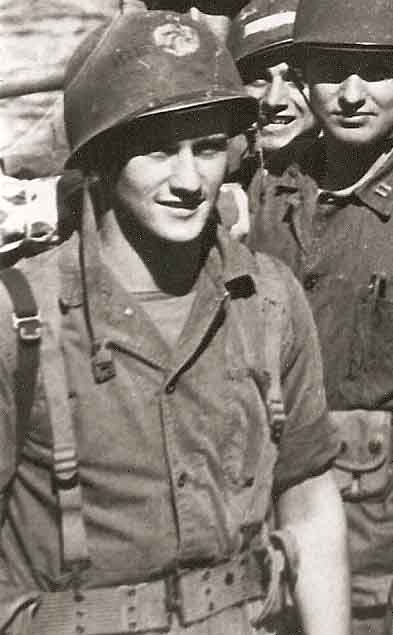
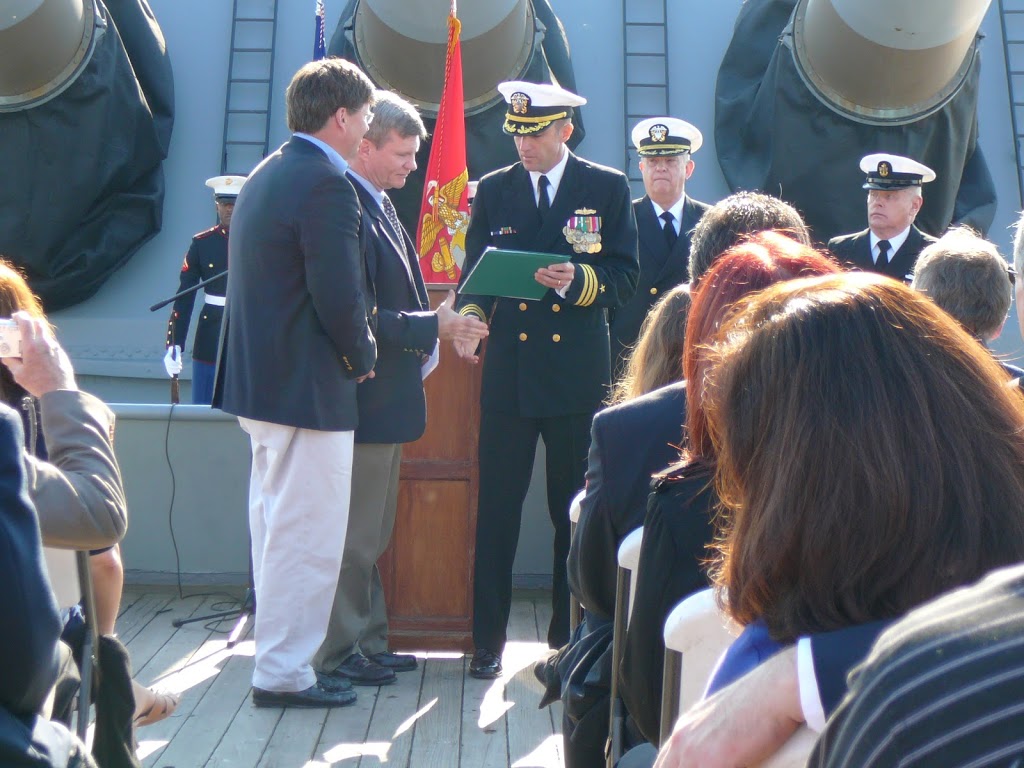
THE BRONZE STAR MEDAL is posthumously awarded to Hospital Apprentice First Class Joseph R. Brennan for meritorious achievement while serving as a Medical Corpsman with the 6th Naval Beach Battalion on 6 June 1944, on Omaha Beach. The awards are received by Joe Brennan, Jr. and Michael Brennan, M.D., on behalf of their father.
On Normandy D-Day, Corpsman Joe Brennan provided care for the initial wounded and casualty evacuation on the Fox Green sector of Omaha Beach. Prepared to receive heavy casualties on 90 LSTs waiting off the Normandy coast were 355 Army and Navy trauma surgeons assisted by 2,520 hospital corpsmen and medics. The battle wounded would make the 100 mile Channel trip back to England. OVERLORD was supported by 8,000 military doctor and medics, 100,000 pounds of sulfa, 800,000 pints of plasma, and 600,000 doses of penicillin.
Corpsman Brennan remained extremely busy on D-Day. Sadly, when darkness fell over the invasion beaches, assault craft no longer would pick up casualties in the dangerous surf. Near the Easy Red evacuation site, suffering men were heard crying on the beach, as morphine supplies were exhausted. A warming fire for those in shock would mean instant death from German snipers. Having witnessed the gruesome death of a fellow corpsman, 18-year-old Richard Borden begged frantically for blankets as more Army troops came ashore. Not all could be saved, however, and the mortally wounded began pleading with the medical officers to end their misery. Around midnight, dying Americans were lifted into rubber rafts, and the amphibious sailors, without oars, made a desperate attempt to “dog-paddle” them through the mined surf out to the LSTs. Although the mercy mission was unsuccessful, and a number of men spent their final hours on the far shore, the U.S. Army cited the Naval Beach Battalions for saving countless lives, evacuating more than 800 casualties on D-Day alone, and contributing materially to the capture of Omaha Beach. (Naval History 1999)
Officers of the Army 5th Engineer Special Brigade wrote in their unit history, “The operations of the naval beach battalions attached to the brigades can be said to represent the ideal in Army-Navy cooperation. Battalion commanders maintained constant liaison with their brigade commanders, and, prior to the operation, companies participated in many exercises with the engineer combat battalions which they supported. In this way a high degree of mutual respect was developed between Army and Navy personnel, and a division of responsibilities was clarified during the training period.”
After World War II, Joe Brennan and Dick Borden, close friends in platoon B-5 of the 6th Beach Battalion, went to medical school and became doctors. Drs. Brennan and Borden were interviewed in 2001 by BUMED historian Jan Herman for the medical documentary Navy Medicine in Normandy.
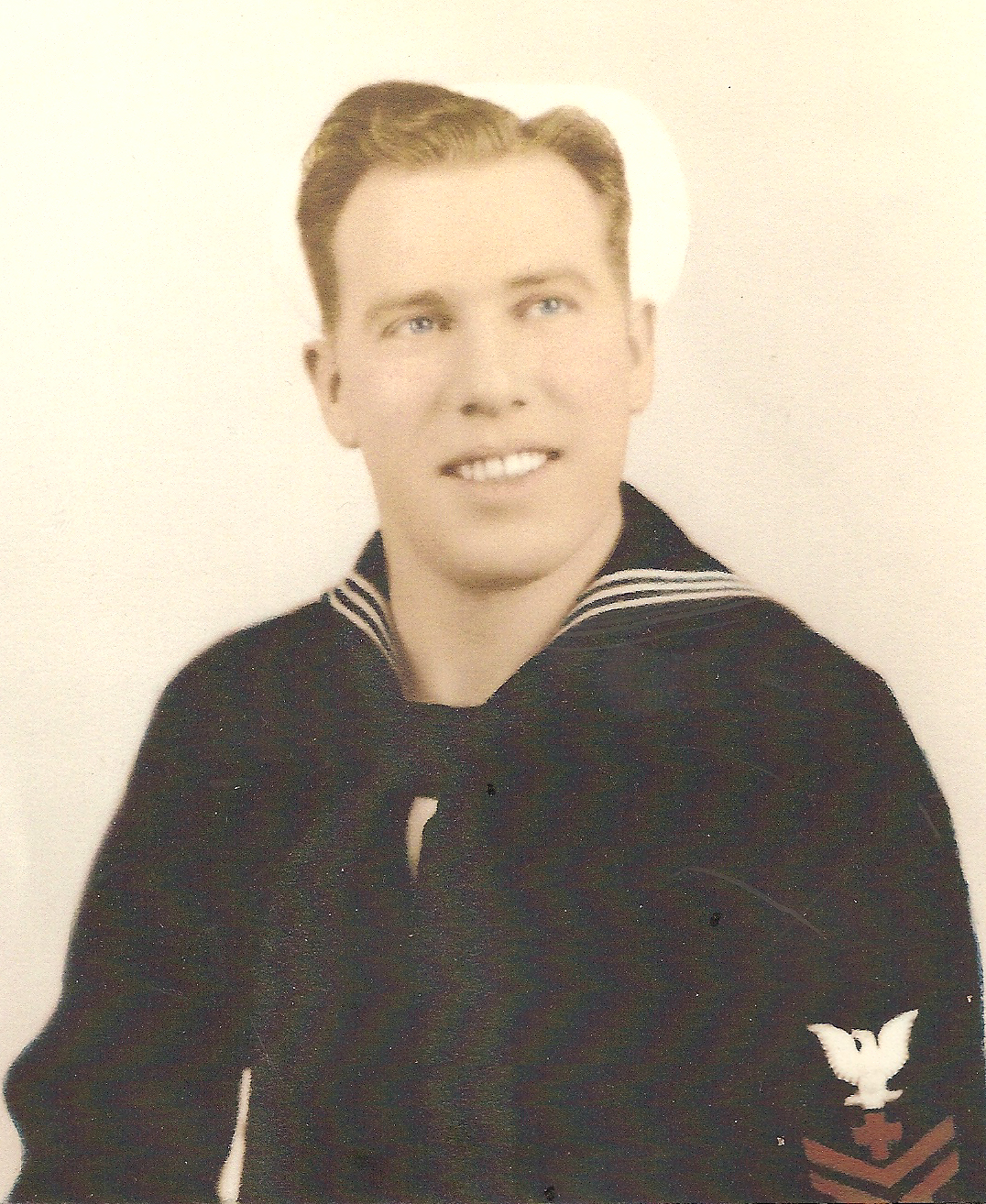
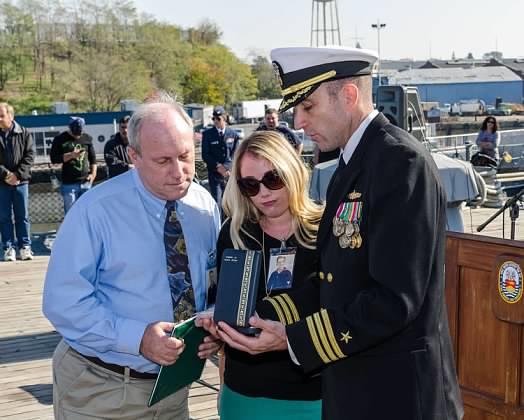
THE BRONZE STAR MEDAL is posthumously awarded to Pharmacist's Mate Second Class John T. Higney for meritorious achievement while serving as a Medical Corpsman with the 6th Naval Beach Battalion on 6 June 1944, on Omaha Beach. The awards are received by John Higney and Patricia Higney on behalf of their father.
Official Army documents emphasize that during NEPTUNE, the amphibious assault phase of operation OVERLORD, John Higney’s 6th Beach Battalion not only managed to accomplish their own mission, but "aided many other units in the accomplishment of theirs." Under near catastrophic conditions on Omaha Beach, amphibious sailors of this naval battalion assumed combat roles in support of the assault, demolished beach obstacles, marked sea lanes, established shore-to-ship communications, directed the infantry landings, and provided medical aid and seaward evacuation for the many wounded and dying young Americans.
During the initial D-Day attack, German snipers would pick off exposed corpsmen and medics while they treated the wounded on the beach. Additionally, a high proportion of casualties on Omaha Beach received rifle bullet wounds in the head. Wounded men, lying on the exposed sand, were frequently hit a second or a third time. Corpsmen searched the casualties and from them they took special first aid kits containing pain-alleviating morphine, sulfas and bandages. They salvaged blankets and medical supplies which floated up with the tide. The dead who carried supplies ashore in the early morning of D-Day made it possible for the seriously injured to survive later in the day.
Corpsman Higney assisted both Army and Navy medical officers in treating casualties on D-Day. Army and Navy personnel worked shoulder to shoulder during the Normandy landings and may have been one of the finest examples of Army-Navy cooperation in World War II. “During the operation itself, it was noted that no plane of cleavage existed between naval beach party and Army elements. The naval beach battalions in some instances furnished dozers for road construction and personnel to direct traffic off the beaches. On the other hand, Army personnel helped to clear underwater obstacles. Perhaps the best example of complete cooperation was found among the medical personnel of the beach battalions and the brigades. Here the feeling was especially marked that a job had to be done and that the definition of responsibilities should not stand in the way of accomplishing a mission.” (Operation Report Neptune, Omaha Beach, History Section ETOUSA, 30 September 1944)
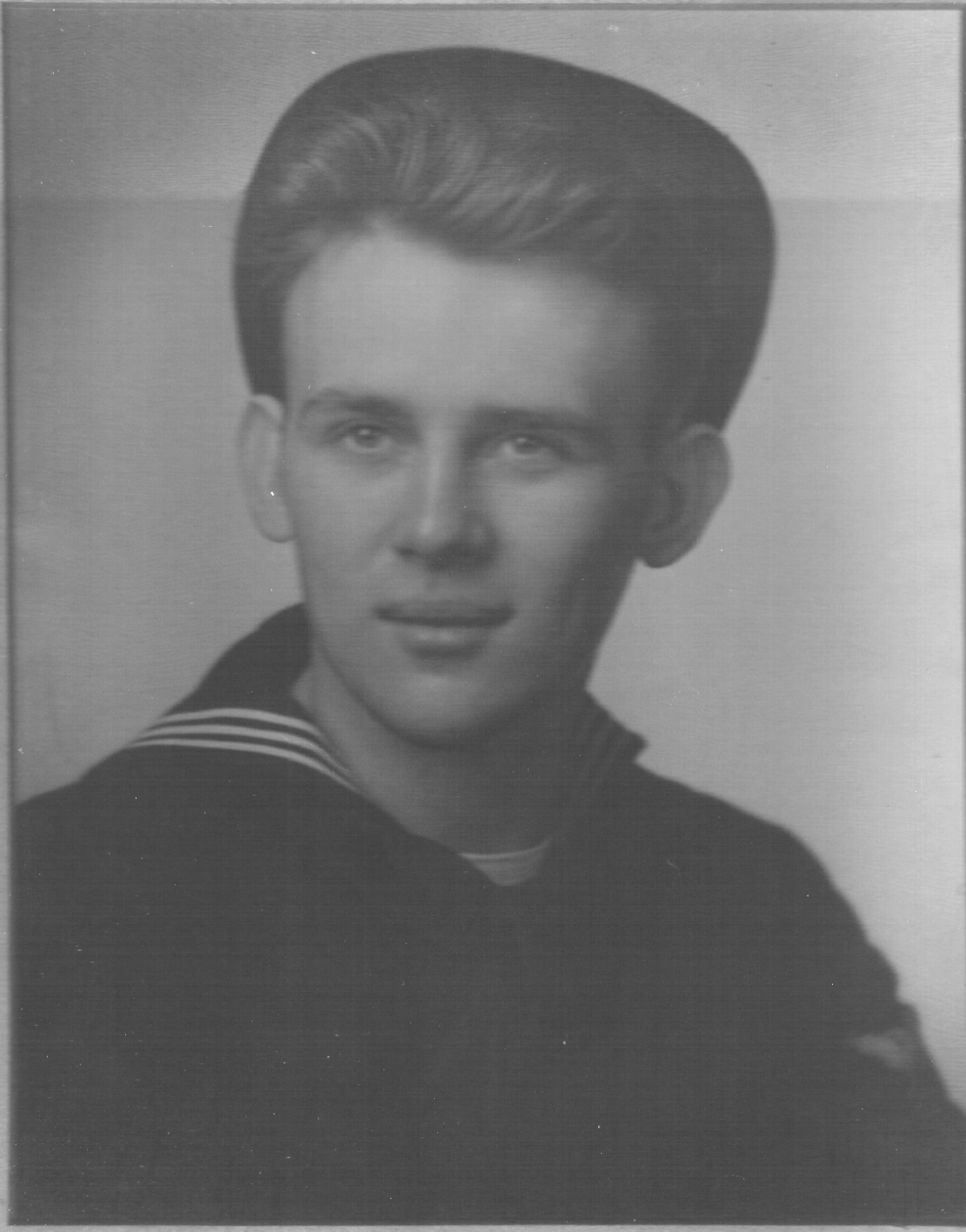

THE BRONZE STAR MEDAL is posthumously awarded to Pharmacist's Mate First Class Joseph H. Wojnowski for meritorious achievement while serving as a Medical Corpsman with the 6th Naval Beach Battalion on 6 June 1944, on Omaha Beach. The awards are received by Lisa and Eleanor Wojnowski on behalf of their father.
During the morning of D-Day, in the cold Channel surf off Fox Green, 6th Beach Battalion corpsmen James S. Brewer and Thurman W. Poe disembarked from an LCT (Landing Craft Tank) into deep water under heavy mortar fire. They were accompanied by a struggling Army captain. When the captain's life belt failed and he was in grave danger of drowning, Poe and Brewer went to the officer's rescue and brought him to the beach. Moments later, Eugene M. Riggleman of the battalion swam 50 yards back out to sea under continuous enemy artillery fire against a strong tide to rescue a coxswain of an LCVP (Landing Craft Vehicle and Personnel), which was disabled and sinking. "In spite of a direct hit on the craft while he was aboard, he brought the man safely ashore." The three amphibious sailors were awarded the Marine Corps Medal. (Navy Medicine, 2000)
Despite horrendous conditions on D-Day, “the medical sections performed their duties in an especially heroic manner” wrote Colonel W.D. Bridges, Corps of Engineers. “They collected casualties, gave first aid and evacuated the casualties to landing craft. Groups of casualties on the beach were subjected to heavy concentrations of mortar fire, and craft were under observed artillery fire the entire time they were grounded.”
More than a half-century after D-Day, 6th Beach Battalion corpsmen remembered the horror of “bloody” Omaha and remained haunted by the indescribable suffering 6 June 1944. Joe Wojnowski was particularly haunted by the death of his friend and fellow corpsman, Morris Rickenbach. “In the early 1990s,” Eleanor Wojnowski wrote, “Dad told me he had a strong desire to visit Rickenbach's grave site. I did some research and found out that he was buried in a Burlington County, NJ cemetery by the name of Beverly National Cemetery. It's about an hour and a half from our home. That started our yearly ritual. On June 6th of every year that was to follow, Dad and I would go and visit Morris Rickenbach, Jr., at section F, grave #1560 at the Beverly Cemetery. Mr. Rickenbach's date of death was June 6, 1944. We continued that ritual until the year Dad couldn't walk anymore.”
General Omar Bradley’s First U.S. Army Report of Operations concluded, “Combined training with the Navy Medical Department is a must. Too much cannot be said about the part which the navy played in the early days of the landing operation.” General Bradley wrote many years later, "Omaha Beach was a nightmare. Even now it brings pain to recall what happened there on June 6, 1944. I have returned many times to honor the valiant men who died on that beach. They should never be forgotten. Nor should those who lived to carry the day by the slimmest of margins. Every man who set foot on Omaha Beach that day was a hero."
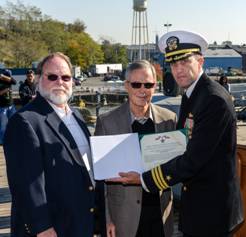
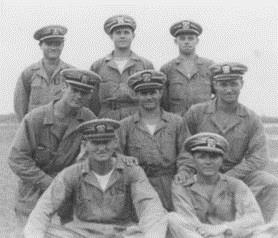
THE BRONZE STAR MEDAL is posthumously awarded to Lieutenant Michael M. Etzl, MC, USNR, for meritorious achievement while serving as a Medical Officer with the 6th Naval Beach Battalion on 6 June 1944, on Omaha Beach. William and Michael Etzl, Jr., M.D., are presented the awards on behalf of their father. Company "C" officers of the 6th Beach Battalion seated left to right: George "skipper" Clyburn and Don White. The 2nd row includes Beachmasters Joe Vaghi, Vince Perrin and Karl Hein. Medical officers standing are Russ Davey, John Kincaid and Mike Etzl. In 1943, the young sailors trained with the U.S. Army and wear their Army coveralls and Navy visor hats at the Amphibious Training Base, Fort Pierce, FL.
At 0830 on Normandy D-Day, Dr. Mike Etzl disembarked the USCG-manned LCI(L) 89, and with his C-7 platoon in chest-deep water, struggled ashore the Easy Red sector of Omaha Beach. SIXTH Beach Battalion seamen carrying Tommy Guns were tasked with guarding medical personnel and casualties on the beach. Two platoons from Dr. Etzl’s beach battalion worked their way up to the shingle bank with three surviving DD tanks which were seen to knock out several enemy pillboxes. Meanwhile, a detail from his Company C helped rescue two platoons of infantrymen from the water. These men had debarked in deep water and their load of equipment was pulling many men down.
During the landings, Dr. Mike Etzl, a 1942 medical school graduate of Hahnemann in Philadelphia, provided medical aid and casualty evacuation in the Easy Red sector of Omaha Beach. “My dad was proud of his military service,” wrote Mike Etzl, Jr., “but like so many combat veterans he didn't talk very much about the details of D-Day or his time in the Pacific. When I was an adult and a physician we did discuss Operation OVERLORD and his landing on Omaha Beach. Years later the movie ‘Saving Private Ryan’ seemed all too accurate. That movie also hit home the fact than in addition to her husband, my mother had 6 of her 8 brothers serving in the military during WWII.”
Rear Admiral John L. Hall, commander of the XI Amphibious Force and Force "O" for Omaha Beach, wrote in his memoirs that he took his OVERLORD assignment seriously and did not want publicity for the U.S. Naval Beach Battalions in Europe. Commander Hall explained that to reveal the mission and location of the beach battalions would provide sensitive information for the enemy; there were future invasions to fight! After World War II, and for the next half-century, Historian Jonathon Gawne described the Naval Beach Battalions as “the forgotten sailors of the invasion beaches!”
Mike Etzl, Jr., M.D., Clinical Director of Hematology & Oncology at Phoenix Children’s Hospital, was walking through an airport terminal while traveling to a medical conference. Up to 1998, his father’s 6th Beach Battalion, ashore Omaha Beach early in the morning on D-Day, had been completely left out of the history books. At the airport terminal bookstore, Mike began looking through the highly acclaimed Spearheading D-Day: American Special Units in Normandy by Jonathon Gawne and to his amazement, he was staring at World War II photos of his father.
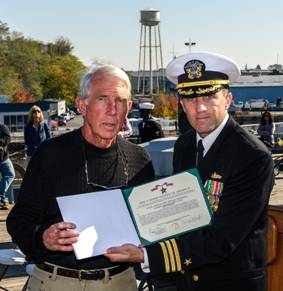

THE BRONZE STAR MEDAL is posthumously awarded to Lieutenant Eugene D. Guyton, MC, USNR, for meritorious achievement while serving as a Medical Officer with the 6th Naval Beach Battalion on 6 June 1944, on Omaha Beach. Eugene Guyton, Jr., M.D., a practicing physician in Florence, SC, accepts the awards on behalf of his father. Note the “red arc” and small oak leaf signifying the Navy Medical Corps painted on the front of Lieutenant Guyton’s M-1 helmet.
During World War II amphibious warfare, medics and hospital corpsmen were profitable targets and often shot first by the enemy. Unattended casualties piling up on the beach, mutilated and crying out in pain, had a demoralizing impact on the follow-up troops coming ashore. In the Pacific theater, Navy corpsmen took off their crosses and even dyed their bandages jungle green. For the Allied landings in France, OVERLORD planners did not want the Red Cross painted on the helmets of Army and Navy medical personnel of the of the Engineer Special Brigades. Instead, the distinguishing “white arc” identified Army engineers and the “red arc” was painted on the helmets of beach battalion sailors on Omaha Beach. Unfortunately, the Geneva Convention Red Cross brassard made the aidman’s job one of the more hazardous on the beach.
American ingenuity saved lives and contributed to the capture of Omaha Beach. The battlefield has always been the physician’s laboratory, demanding improvisation and courage under horrific conditions. Eugene Carusi, commander of the 6th Naval Beach Battalion, got a .30-caliber anti-aircraft shell through the top of his lung on the evening of D+2. Army medics doubted he would survive, but Dr. Gene Guyton, assisted by Corpsman Richard Borden, provided medical aid. Carusi had a sucking chest wound with respiration drawing in dust and bacteria; Dr. Guyton utilized a thrown-away rubber gas mask carrier as a compress to seal the sucking wound. The commander was evacuated the following day and later made a complete recovery.
Although German snipers picked off exposed medical personnel while they treated the wounded, a month after D-Day, beyond the beachhead in the hedgerows, the killing and wounding of aidmen by German rifle fire was carefully studied. Medical commanders concluded that a high proportion of casualties were shot from the unbrassarded right side; Germans by and large were now following the Geneva rules of land warfare. Accordingly, medics began wearing brassards on both arms and painted non-regulation Red Crosses on their helmets. (Fighting For Life by Albert E. Cowdrey)
Army and Navy aidmen were universally praised by D-Day veterans as the bravest of the brave. Excerpts from the Secretary of the Navy's 1943-44 annual report to President Franklin D. Roosevelt concluded that for 99 of 100 men wounded during the Normandy landings, the road to recovery began on the beachhead. Expertly trained and equipped Army and Navy medical personnel gave first-aid treatment of life-saving proportions to the initial assault troops during the amphibious attack. Medical care was exacting because of the nature and the severity of the wounds. By the use of plasma, control of hemorrhage and proper splinting, personnel of the U.S. Naval Beach Battalions were able to evacuate those injured whose lives might otherwise have been lost. Urgent life-saving surgery was practiced aboard LSTs and the majority of the 41,035 wounded reaching England for hospitalization were in excellent condition. Penicillin was a crucial component of the medical arsenal in the ETO after the United States mass-produced 1,633 billion units of the antibiotic in 1944. The mortality rate of the wounded evacuated from the invasion beaches of France was 3/10 of 1 percent.
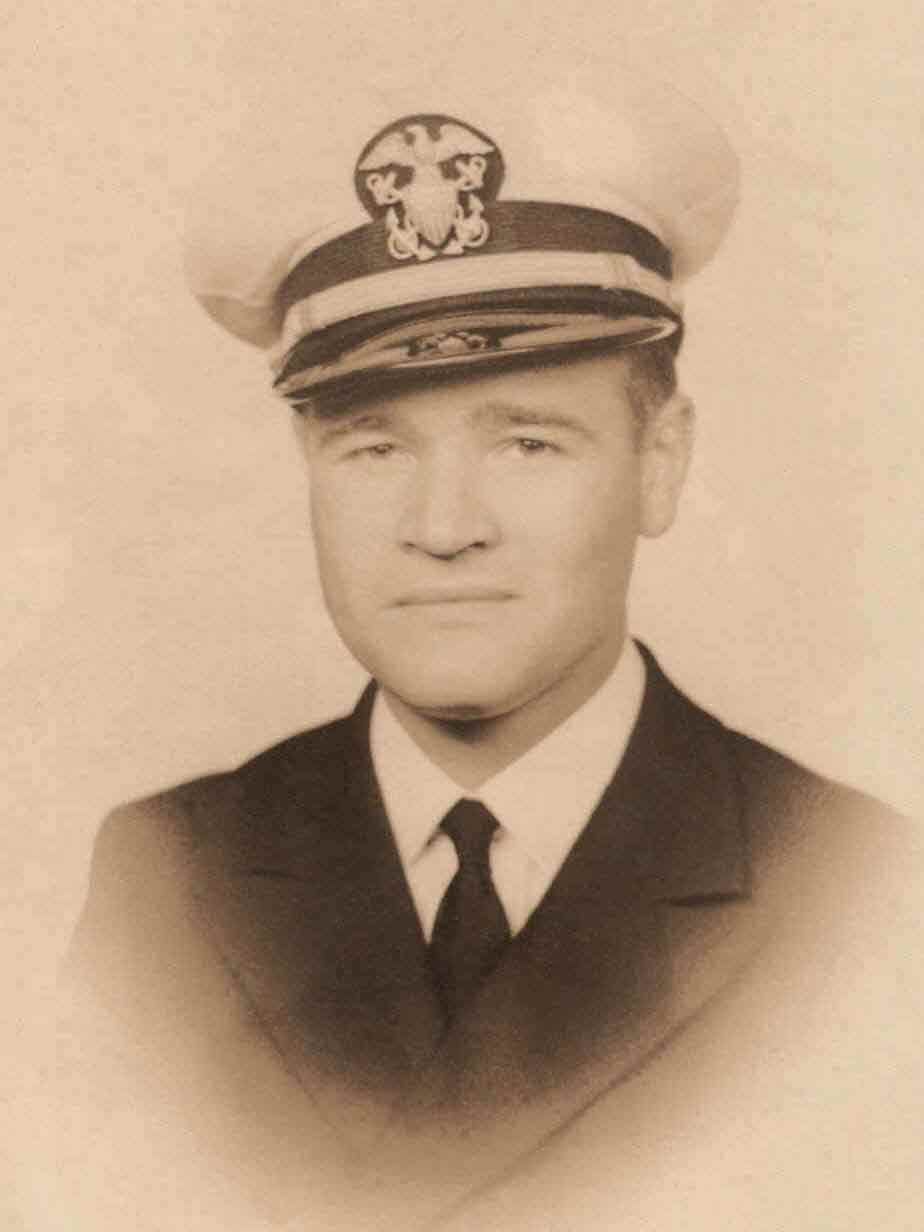
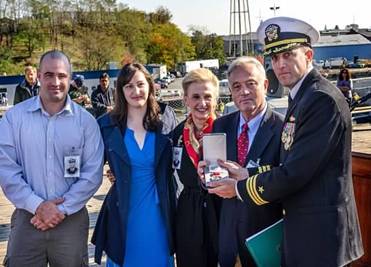
THE BRONZE STAR MEDAL is posthumously awarded to Lieutenant J. Russell Davey, Jr., MC, USNR, for meritorious achievement while serving as a Medical Officer with the 6th Naval Beach Battalion on 6 June 1944, on Omaha Beach. Dr. Davey, a 1942 graduate of Temple Medical School, died in 1948 at the age of thirty. The Davey family receives Lieutenant Davey’s awards from Commander Christopher Nelson, Beachmaster Unit ONE, onboard the Battleship NEW JERSEY.
I never knew my father, who died suddenly of undetermined causes in 1948, but was introduced to him through his World War II shipmates and overseas letters written to my mother. Shortly before D-Day, after intensive amphibious training in the UK, 26-year-old Lt. (jg) Davey wrote in a V-MAIL to his wife, “The surprising & gratifying thing is that the morale of all of us is so good. We are, & we all know it, the best of our kind - I mean our C-Company. And we know that we are working with the best. We are proud of the fact that we will have our small but important part in shaping the world’s destiny. And we know that we can do it! We know that we are indispensable, and we are all anxious to prove it. But probably what makes us happiest is that we know that we can now look forward to the day when we’ll come sailing home to our loved ones…I love you, Russ...P.S. Please excuse the stationary and the writing, but such is war."
On D-Day 6 June 1944, Dr. Davey’s 6th Naval Beach Battalion provided triage and casualty evacuation for “The Big Red One,” the Army assault troops of the 1st Infantry Division. Over the next 21 days on the beach, the mortality rate of the 41,035 wounded evacuated from Normandy back to the UK was 3/10 of 1 percent. Of those injured on Omaha Beach, 134 were treated and evacuated with shrapnel and projectiles lodged directly in the cardiac muscle. Before D-Day, the human heart had been regarded as surgically forbidden. Having experimented only on the hearts of animals, Captain Dwight Harken, a brilliant young U.S. Army surgeon in the UK was presented with dying D-Day casualties. “To leave the shrapnel in was extremely dangerous, but removing it was almost surely fatal.” Dwight Harken had no choice but to cut into the wall of a still beating heart, insert a finger, locate the shrapnel, and remove it. He often had to close the heart wound by holding his finger over it, occasionally sewing a piece of his rubber glove directly into the cardiac muscle. Not one of Dr. Harken’s “heart patients” evacuated from Omaha Beach died; his 1948 pioneering heart surgery for mitral valve stenosis did not happen out of the blue. Medical historians consider Normandy D-Day as one of the decisive turning points towards modern cardiac surgery.

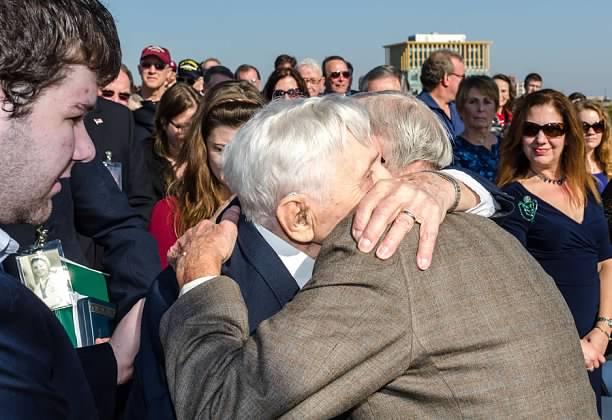
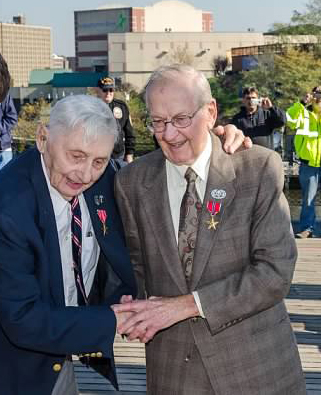
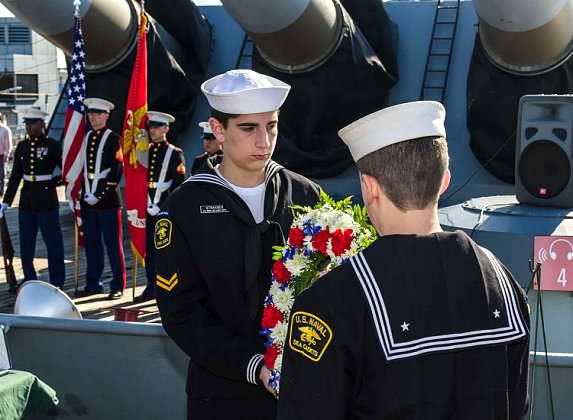
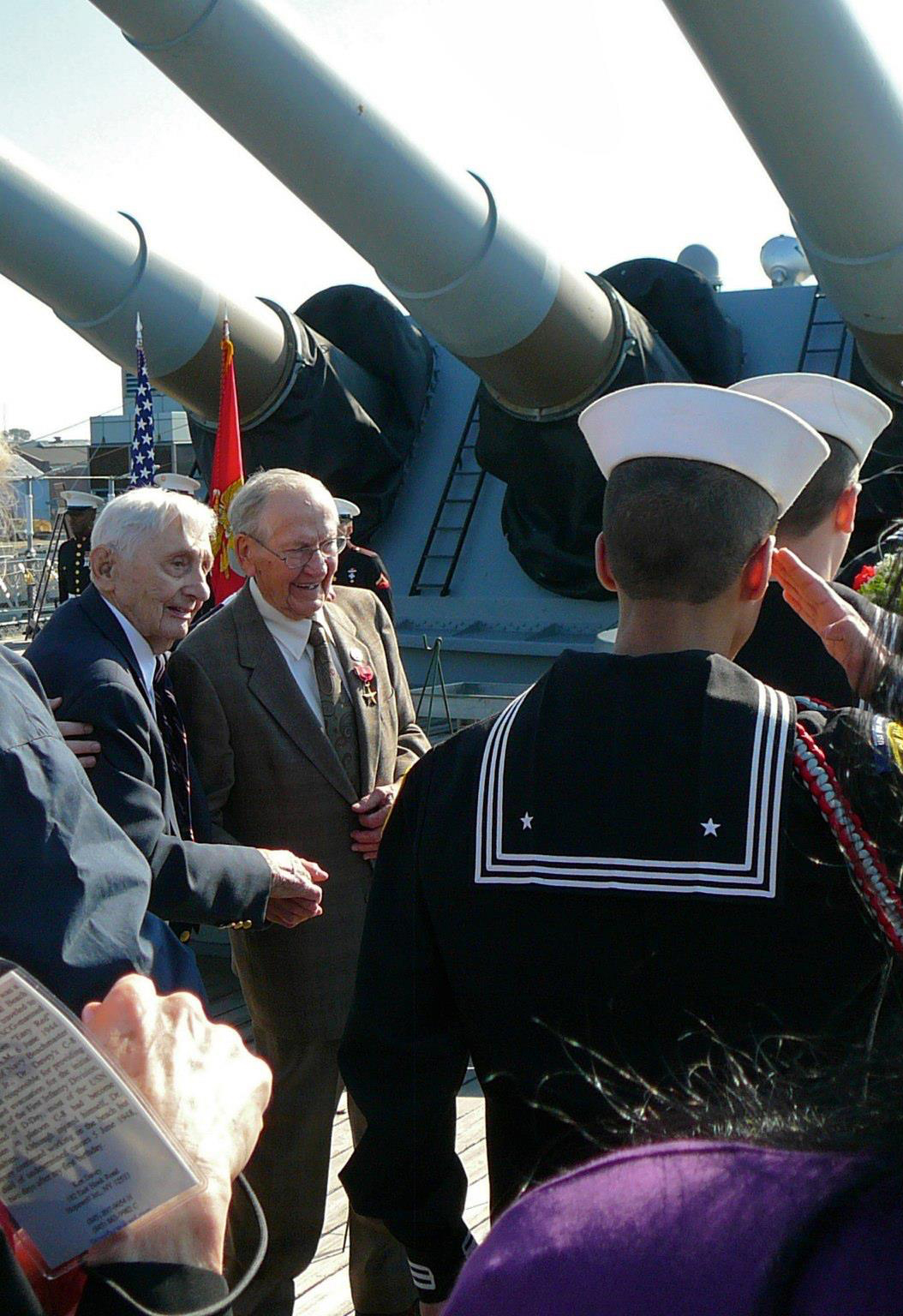

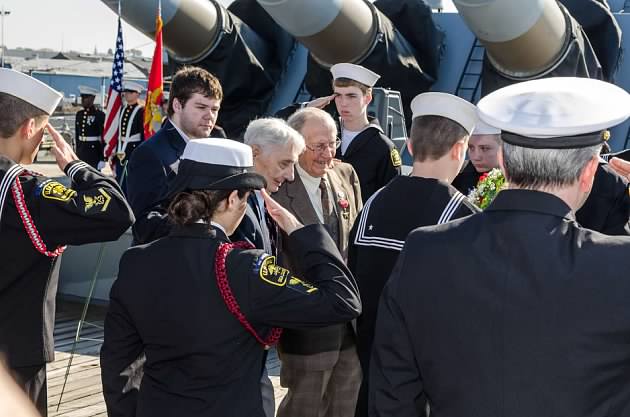

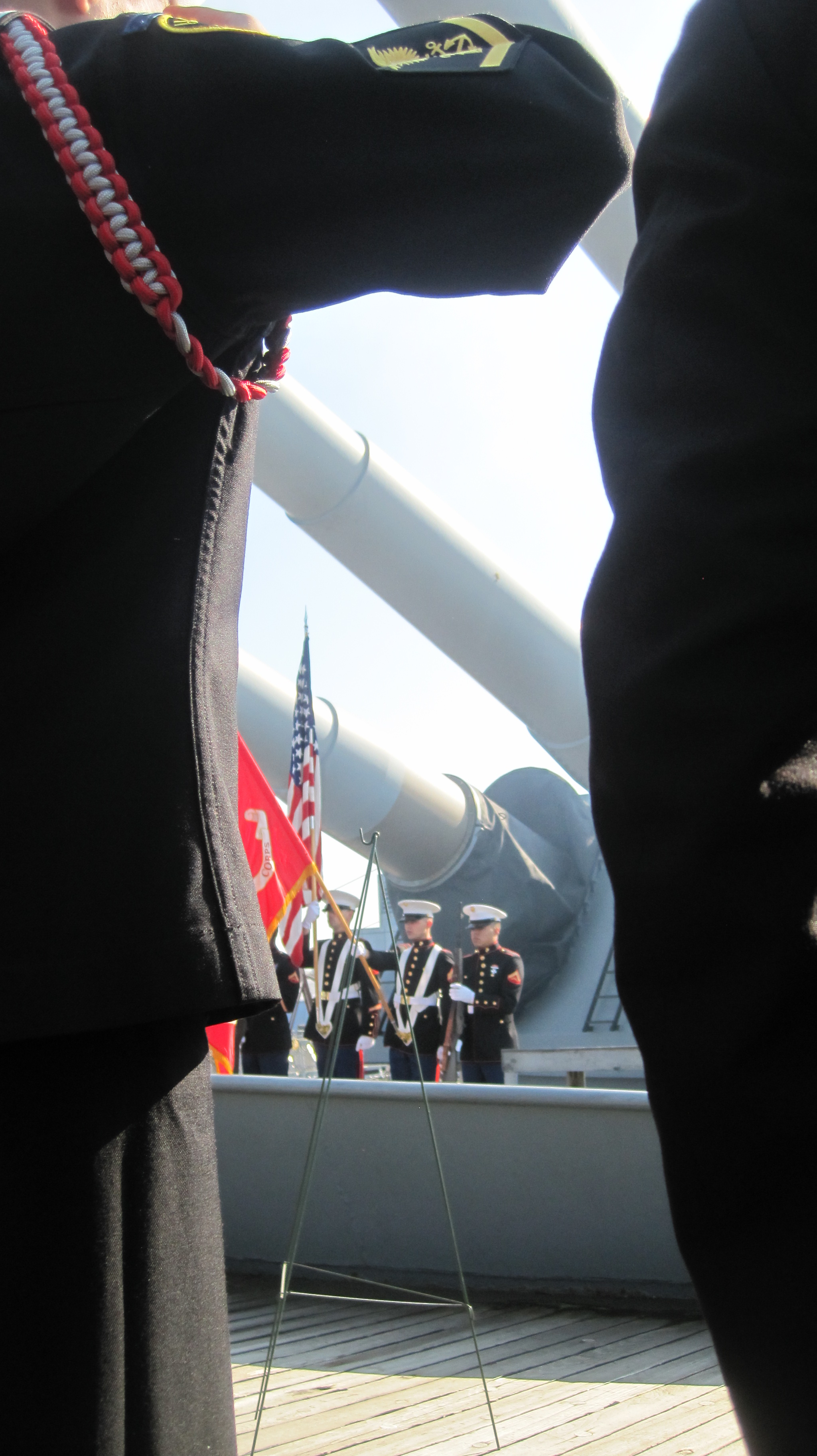
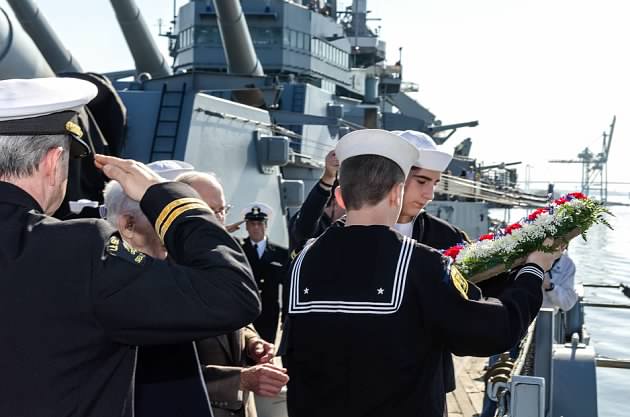
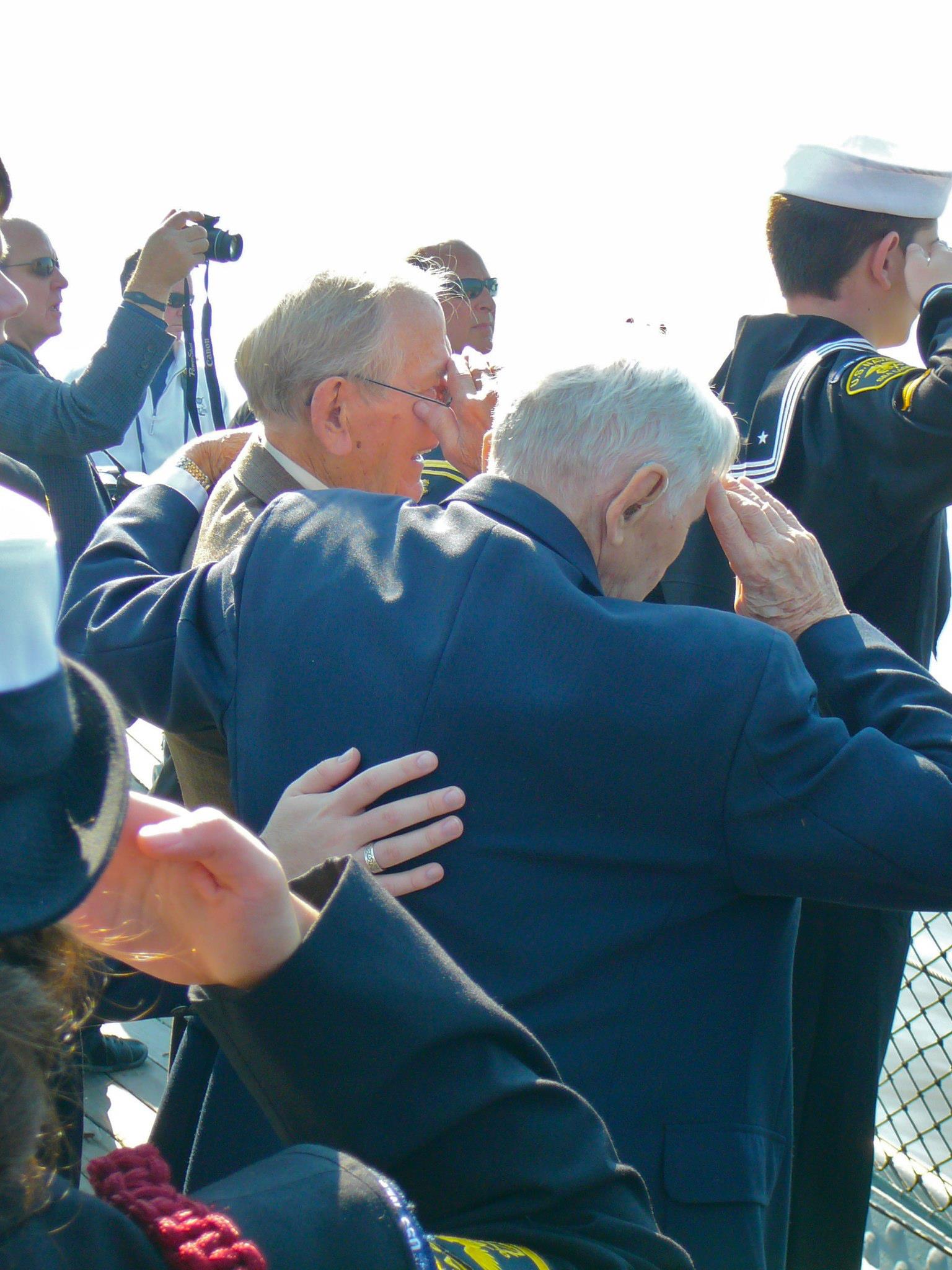
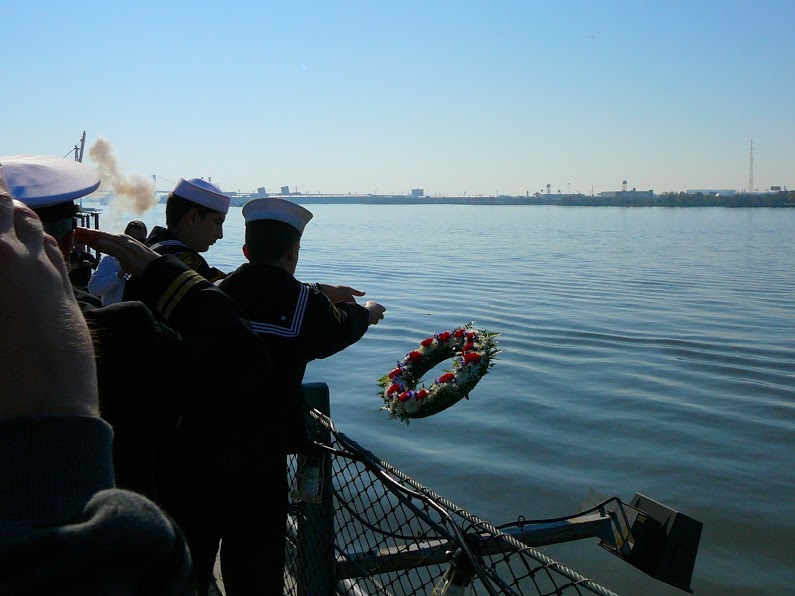

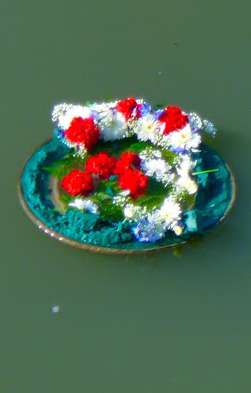
November 2012
Dear Captain Walter Urban, USN (Ret),
The Combat Medical Badge and Bronze Star Medal presentation onboard the Battleship NEW JERSEY on Veterans Day, 11 November 2012, would not have happened without the kindness and outstanding professionalism of Jason Hall’s NEW JERSEY staff and Beachmaster Unit ONE. After the ceremony, Commander Christopher Nelson, USN, asked how I thought it went and my reply - awesome! The NEW JERSEY ceremony was spiritual, inspirational, and surreal, including balmy weather from San Diego. The entire event was incredibly moving for 6th Naval Beach Battalion family members. And at the end, while the “Navy hymn” Eternal Father played, I will never forget two old World War II veterans holding on to each other, dragging themselves to the port side of the Battleship NEW JERSEY, to release the Memorial Wreath into the Delaware River, and the 5" Gun Salute followed by Taps and Anchors Aweigh.
After the ceremony, Andy Chmiel and Vince Kordack treated honoree families to a splendid reception on the stern of the Battleship.
I will forever be grateful to the USS NEW JERSEY and Beachmaster Unit ONE.
Best wishes,
Ken Davey



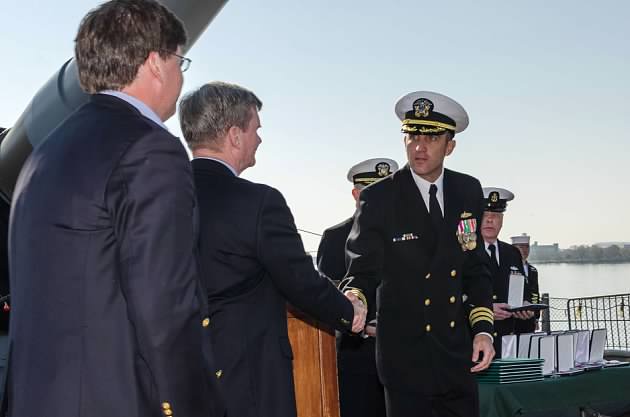


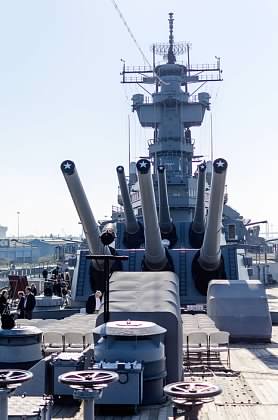
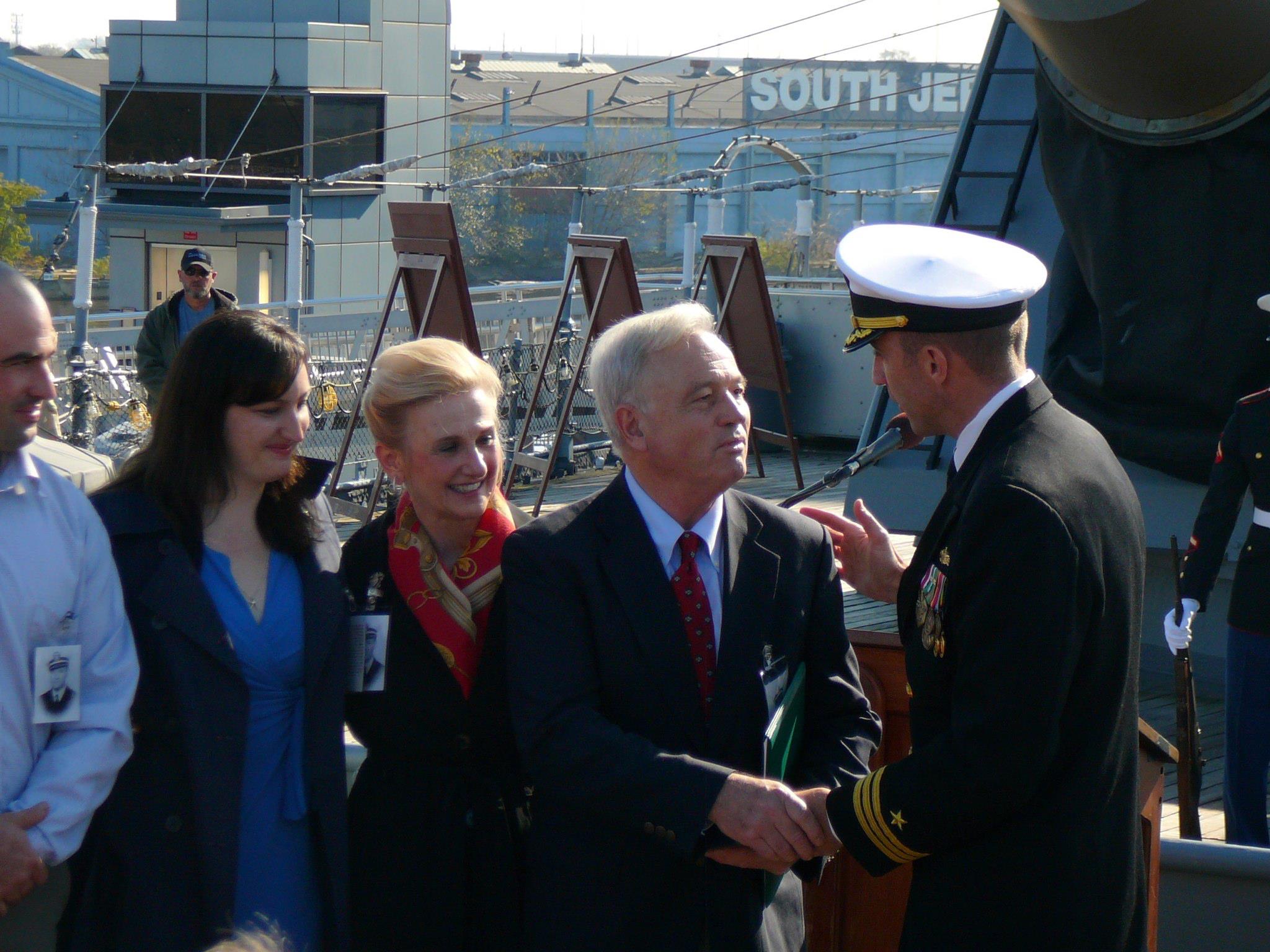
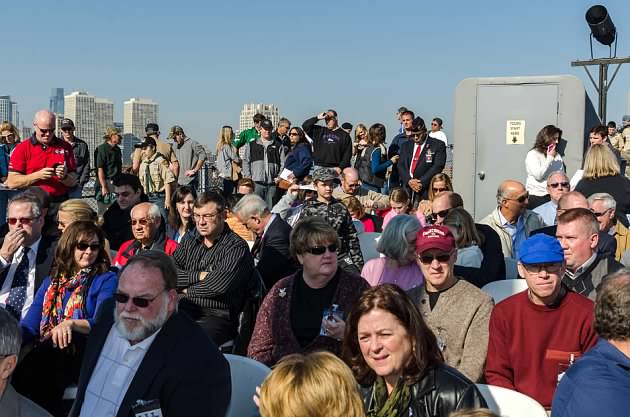
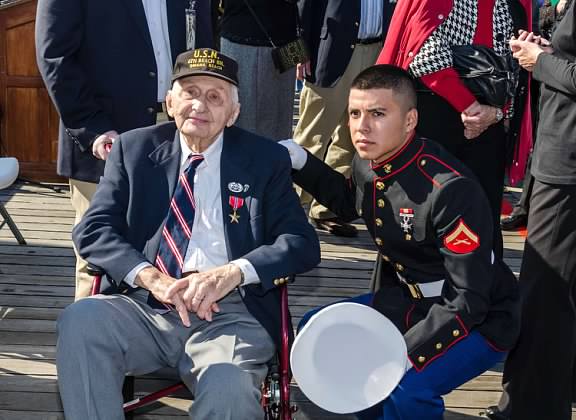

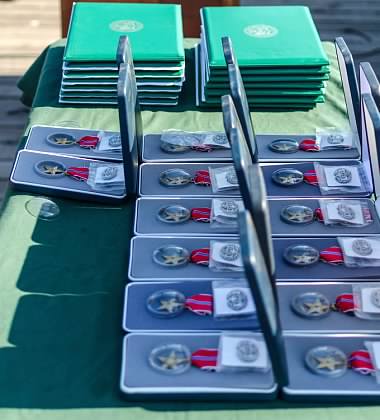
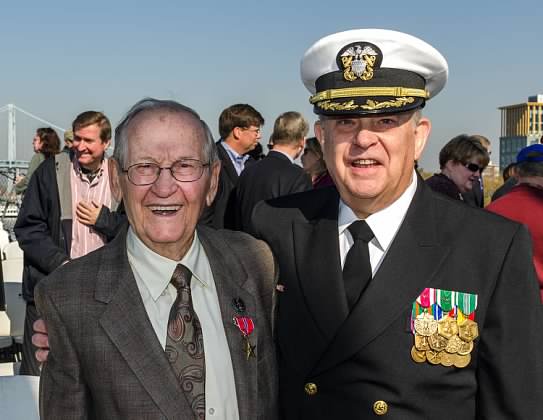

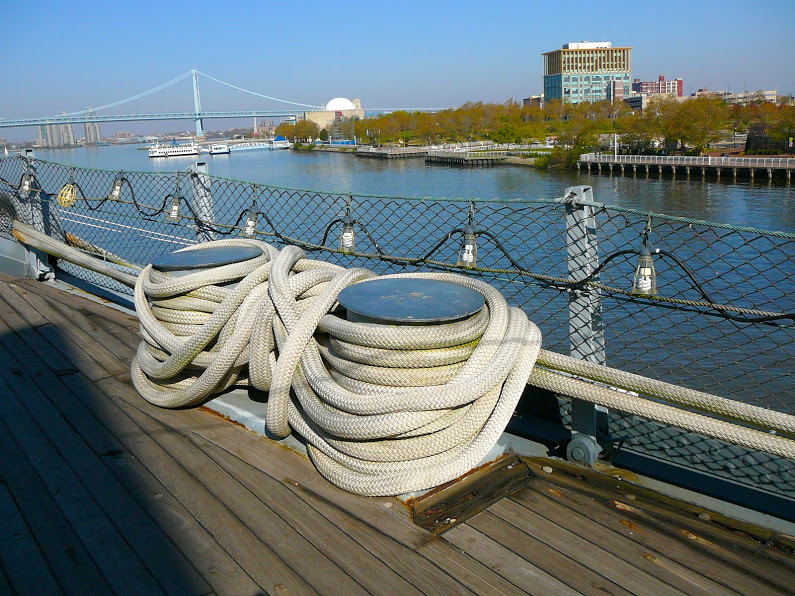
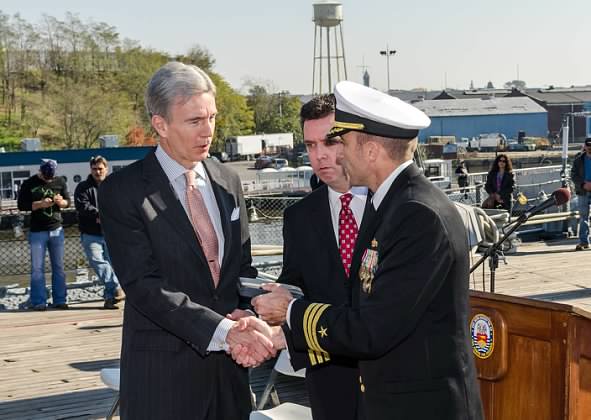

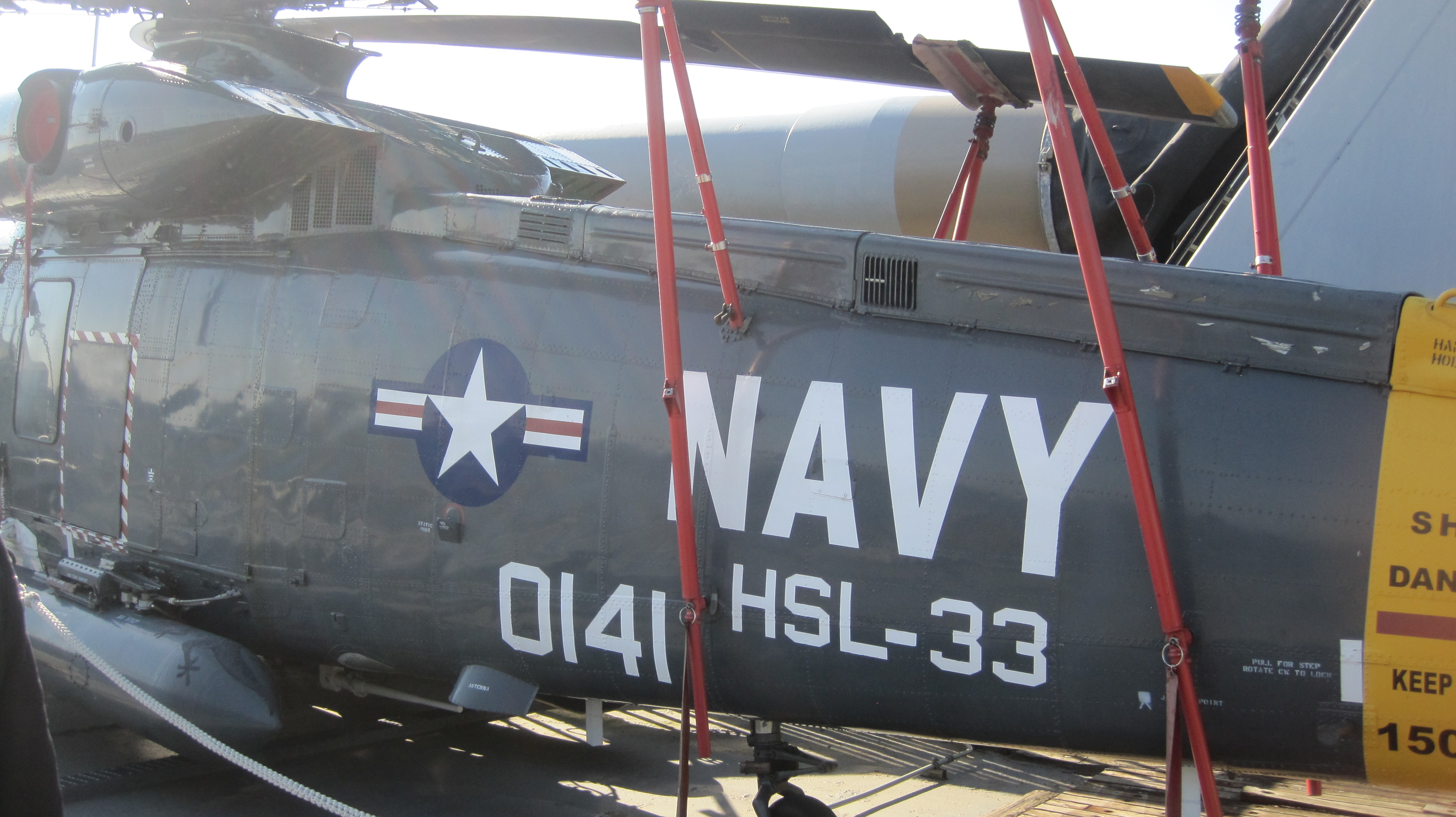
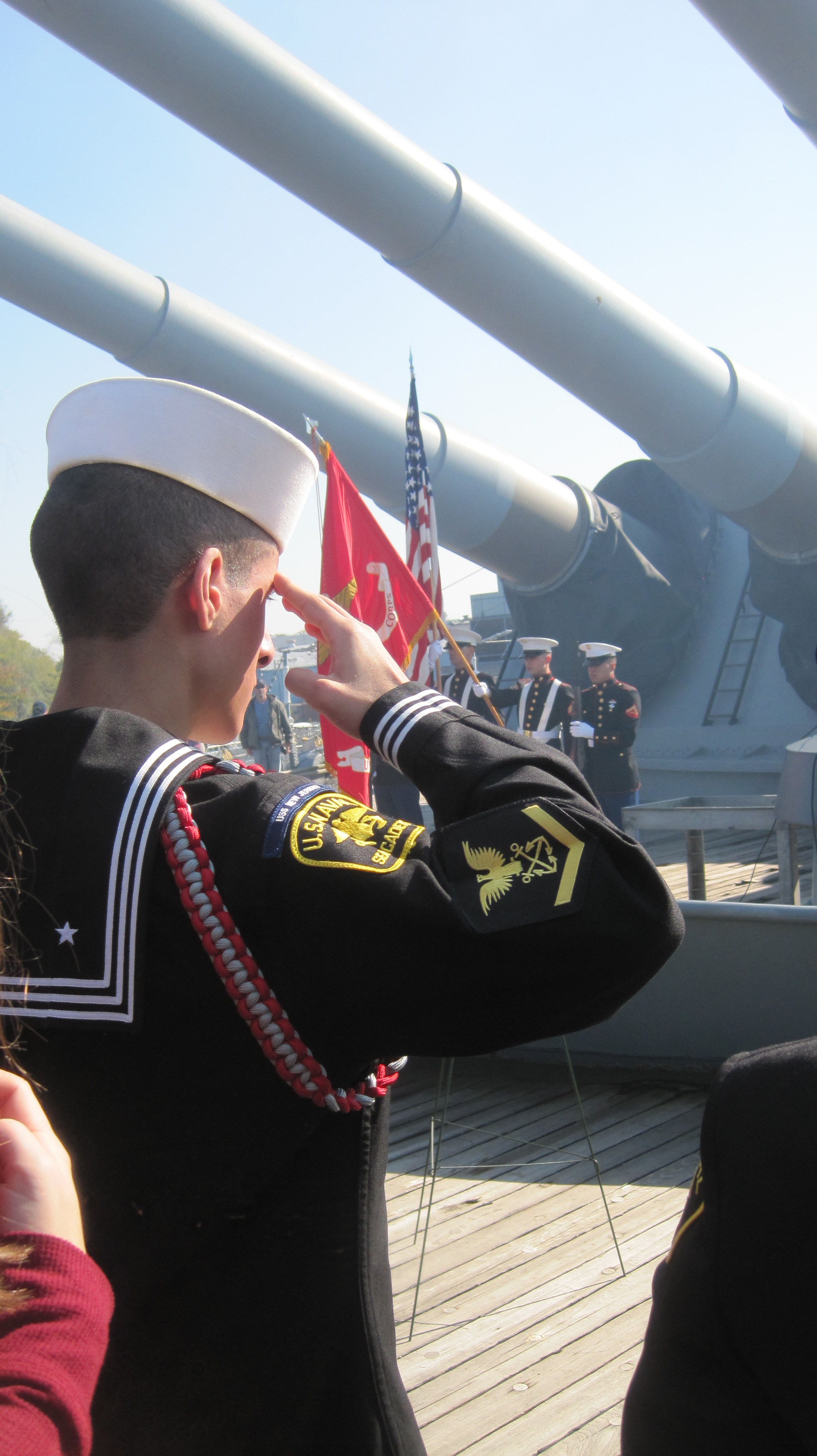



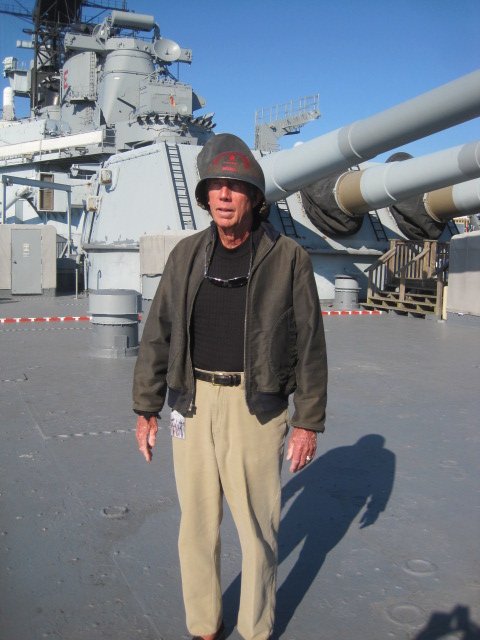
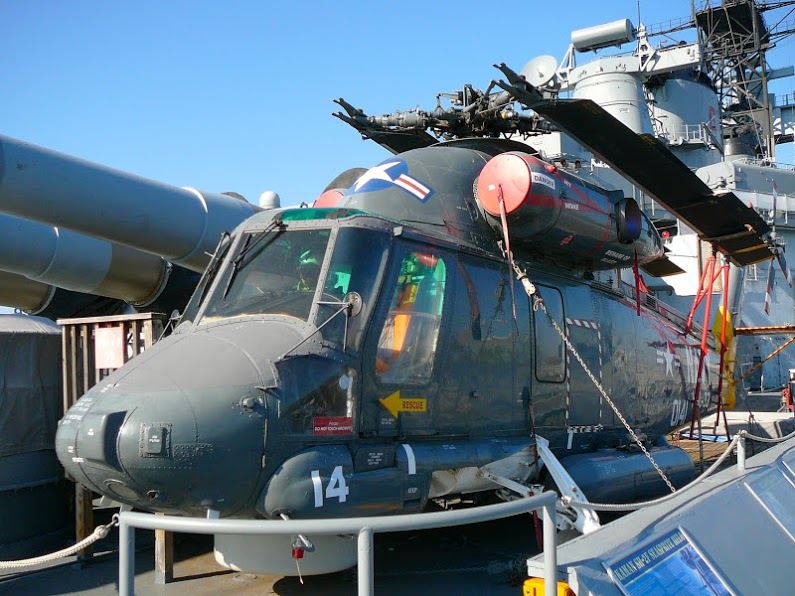


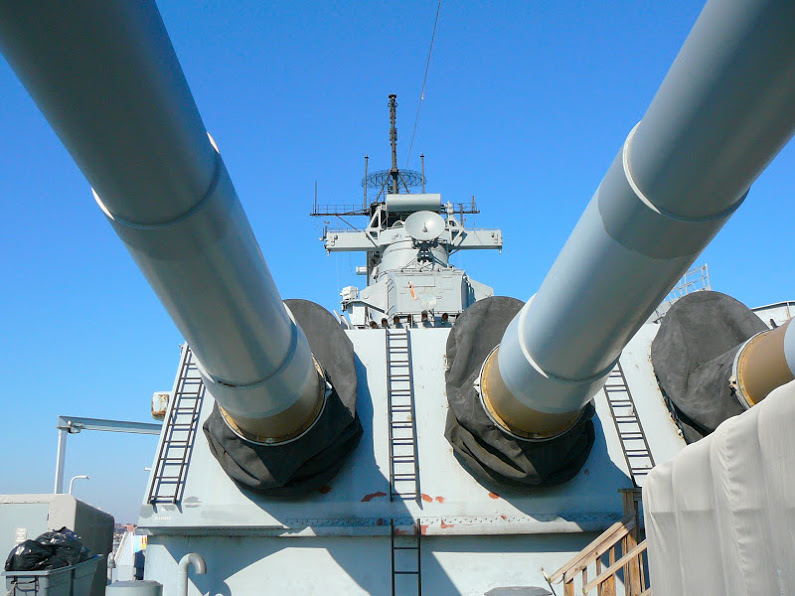
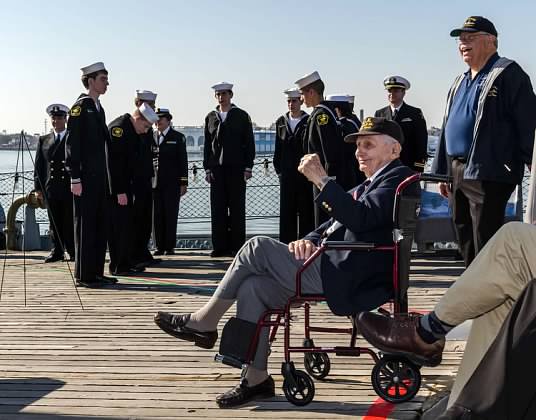

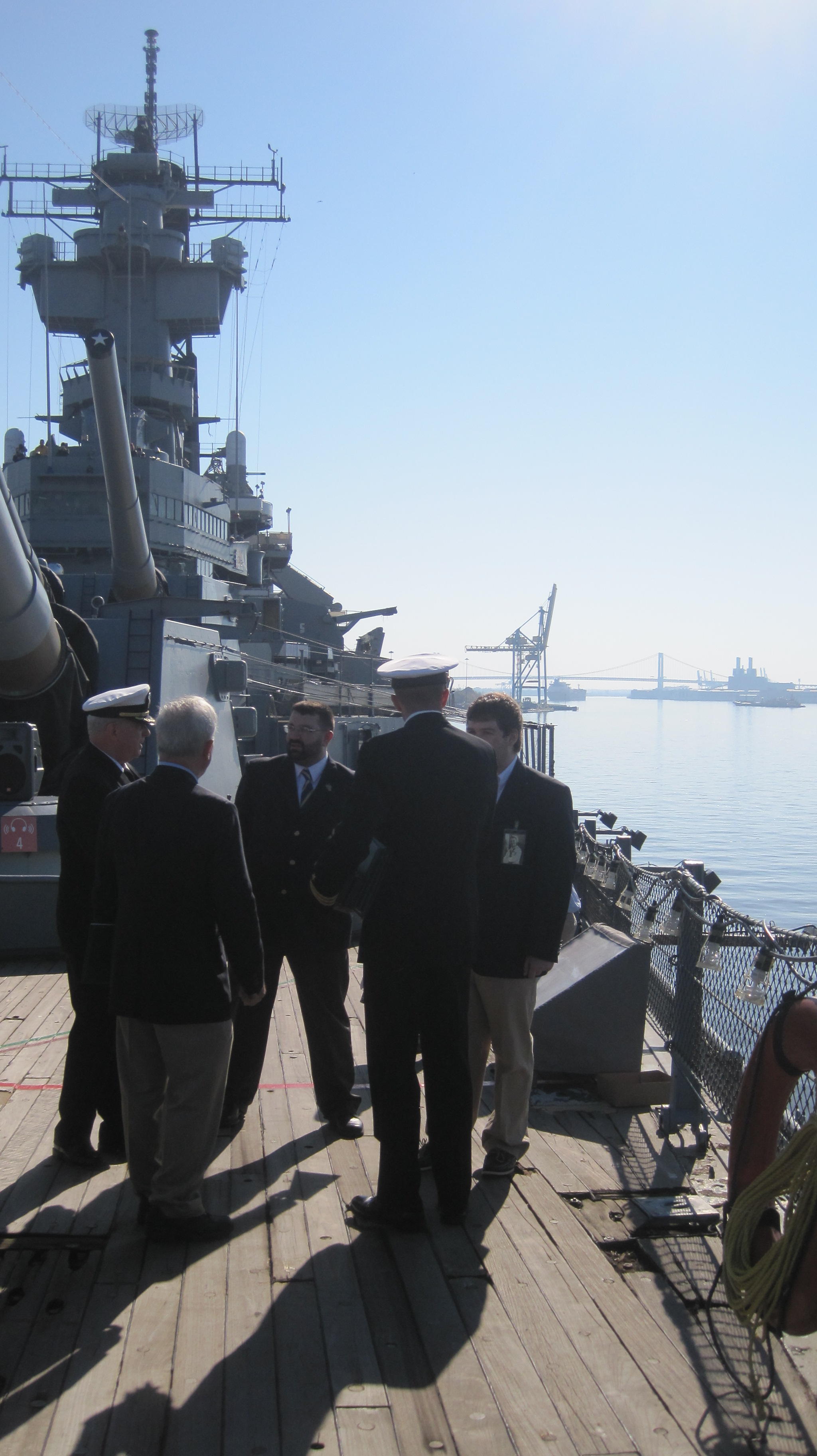
A special thanks to Michael Chmiel for preserving the Bronze Star ceremony with his photography onboard the Battleship NEW JERSEY on Veterans Day 2012. Selecting the NEW JERSEY as the site of the Bronze Star ceremony was particularly fitting since several of the recipients had ties to the Philadelphia area. Corpsman Charles L. Abel (KIA) was from Lancaster, PA, and Corpsman Morris W. Rickenbach (KIA) was from Camden, NJ. In addition, Drs. Etzl, Ramsey, and Davey were Philadelphia M.D.s.
It is hard to imagine that just one year before the 1944 cross-Channel attack, young Navy officers just out of medical school received their orders: “You are hereby detached from duty at the Navy Yard, Philadelphia, Pa., and from such other duty as may have been assigned you; will proceed without delay to Norfolk, Va., and report to the Commanding Officer, Amphibious Training Base, Camp Bradford, Naval Operating Base, for duty with Beach Battalion No. 6, and for duty outside the continental limits of the United States. Report also by letter to the Commander Amphibious Force, Atlantic Fleet, for this duty.”
The Provisional Government of France honored the 6th Naval Beach Battalion with their War Cross, their country's highest award, the Croix de Guerre with Palm. In 1945, COL William D. Bridges, one of the top Army commanders of D-Day, wrote in a proposed Unit Citation, “The extraordinary gallantry, heroism, and determination displayed in overcoming unusual difficulties and hazardous conditions and the esprit de corps displayed by the 6th Naval Beach Battalion contributed materially to the capture of Omaha Beach and reflect highest credit on personnel of this organization and the Armed Forces of the United States.” RADM Alan Kirk, the highest ranking Navy commander of D-Day, provided theater endorsement. On the 22nd day of August 2000, through the Department of the Army and by the Commander in Chief of the United States, the 6th Naval Beach Battalion was awarded the Presidential Unit Citation for "extraordinary heroism" in military operations on Omaha Beach, Normandy, France, 6 June 1944.

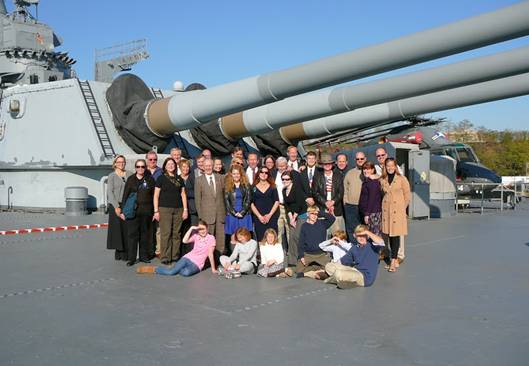
November 12, 2012
Dear Uncle Andy,
What a wonderful weekend with family! And we are all so proud of your contribution to the war effort, our nation, & even the world for your part on D-day. What an awful, terrible, and terrifying day(s) of your life and yet life went on & good truly overcame evil. It is one of my favorite scriptures, Romans 8:28…”to those who love God, who are called into His plan, everything works to the good!”…Truly we can see that now, though on that dark day, the truth of that must have seemed impossible.
My dear Uncle Andy, thank you for your generosity – both to me and all gathered at dinner on Saturday – it was a wonderful meal and time together; a treasure that will stay with us always !! And thank you also for co-sponsoring the reception on the ship. It was fabulous! And genuinely filled a need to touch others after recognizing such an incredible event in which you & other members of your unit participated. The reception put the horror of war into perspective – because here we were as family, friends, & strangers gathered together bearing witness to the honor & dignity of life & that this is worth fighting for even in the horror of war.
Thank you so very much Uncle Andy – for your love, kindness, & generosity. Thank you for your shining example of faith, honor, & dignity that is a light to our lives. I am fortunate to be your niece.
With love,
And God’s grace to you always,
Mary King

 Back to Top
Back to Top



















































































